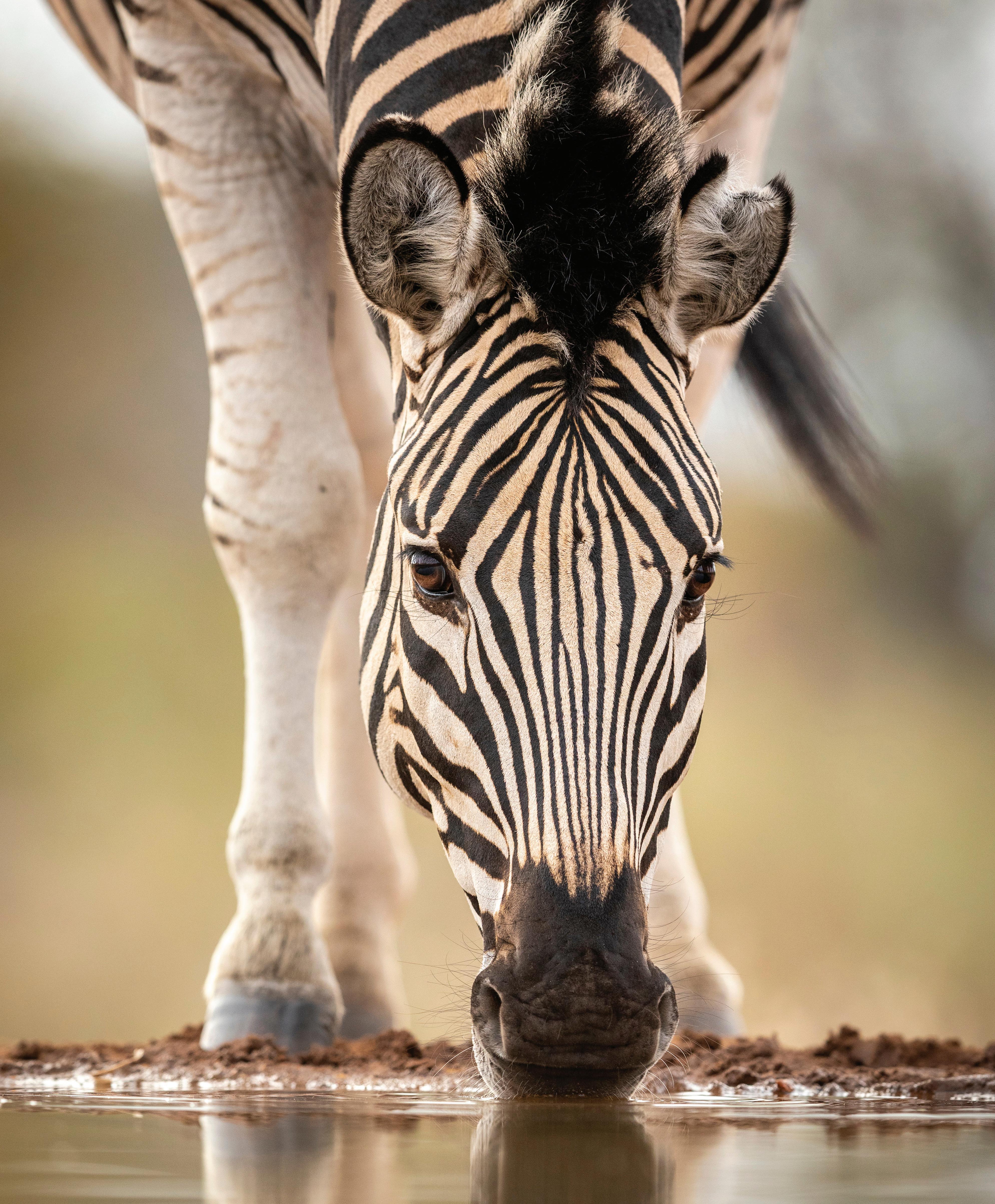


WILLIAMSBURG HOSTS STC | WYOMING LANDSCAPES | RESORT RESPITES





WILLIAMSBURG HOSTS STC | WYOMING LANDSCAPES | RESORT RESPITES






BY VICKIE MITCHELL
Let’s face it. There’s a lot of action in Atlantic City, no matter time of year. Casino hotels are always busy, booking bigname entertainment; adding new dining, shopping and other amenities; and refreshing guest rooms. And come fall through early spring, as temperatures drop a few degrees, so do rates. Deals also pop up for motorcoach tours.
It’s a perfect time to visit, with plenty to do and always something new.
Here are some new and old favorites.
• Expect a greeting from Groman, the 225-pound loggerhead sea turtle, in his new digs at the renovated Atlantic City Aquarium , which proudly shows off 100 species, many from the sea not far from its front door. Groman swims with local fishes like brown drum and Atlantic permit as small sharks in touch tanks await gentle strokes and a Fu Manchu lionfish and Unicorn Tang peer out from a live coral reef. After a tour, local favorites in Gardner’s Basin beckon. Gilchrist Restaurant, famous for hotcakes,
is open for breakfast and lunch. Back Bay Ale House works wonders with seafood, from starters like ahi tuna wonton nachos to more traditional crab cakes and seafood samplers. Both restaurants sit right on the marina.
• A free tour at Jim Whelan Boardwalk Hall is literally music to the ears. Offered April through December, it shows off the hall’s two pipe organs, including the Midmer-Losh , described as the “Sonic Mount Rushmore.” The tour covers ongoing organ restoration efforts and introduces the dedicated volunteers who work on the musical treasures. Also at the Hall, the Atlantic City Experience is a fun and free look at Atlantic City’s history, from tales of diving horses and dancing girls to Mr. Peanut and black hair care entrepreneur Madame Washington.
• When it’s too cool for the outdoor pool, retreat to the tropics and an adult pool at the Island Waterpark at Showboat Resort. Even non-swimmers are entertained with minigolf, billiards, go-kart racing or a cavalcade of arcade games.
• Take off the chill at Tennessee Avenue Beer Hall, where patrons can warm up at a firepit as they play lawn games or sample craft beers. It’s in AC’s lively Orange Loop, where a cigar bar is among the new businesses, and Bar 32 serves up the city’s most decadent chocolate-infused after-dinner cocktails and desserts.
• For a stay with a tranquil vibe, check out the new 105-room The Seahaus Hotel , a Marriott Tribute Portfolio lifestyle hotel. It’s on the boardwalk, without the bustle of nearby casino resorts. Guests can kick back and soak in the sea view at this oceanfront treat, then take a few steps down the boardwalk to casinos, shopping and live entertainment.

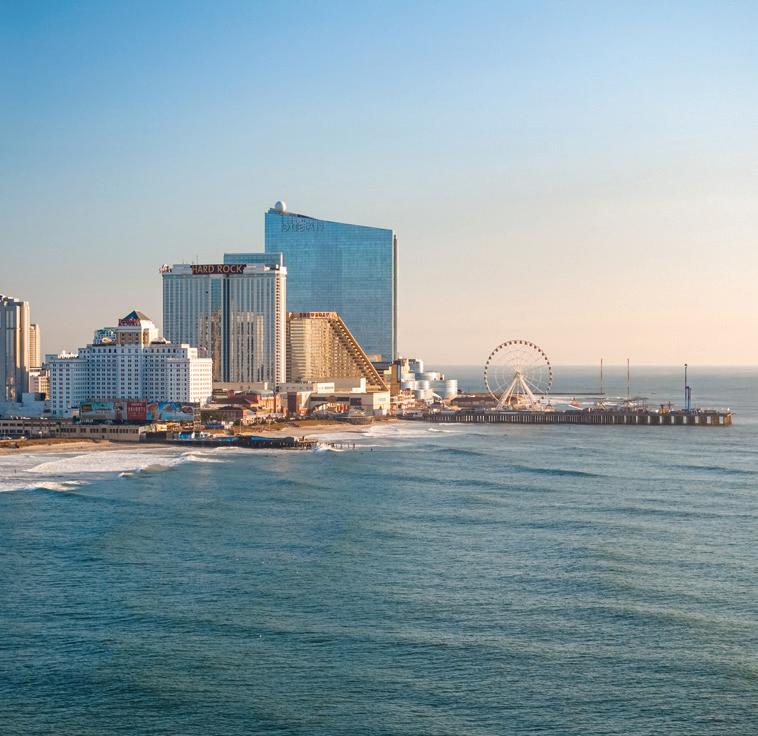

t the 2025 Select Traveler Conference this year in Owensboro, Kentucky, we concluded our breakout survey with two questions that cut to the heart of why group travel has thrived for more than a century in this country. Consider that one of our travel company clients, Collette, is now in its 108th year as a successful tour operator. Consider as well that many families in America have likely enjoyed professionally operated group trips for more than four generations.
The first question’s response revealed that 95% of our travel buyers believe there will always be natural group leaders in any generation of our population. From boomers to Gen Z, and far
into the future, these travel planners said that group leaders will always emerge as the gatherers of friends and family members for a group travel experience.
A follow-up question revealed that 98% of these attendees conversely believe that there will always be followers who are happy to allow a leader to create a travel opportunity for them, whether it’s just down the road or a continent away.
For all our evolutionary advances in technology, transportation and personalized entertainment, these travel planners believe that the social dynamic driving affinity travel will never disappear. Leaders who love planning trips will emerge while followers will jump at the chance to come along, and small bands of travelers will explore their world one adventure at a time.
Mac Lacy — Publisher
Email me anytime with your thoughts at maclacy@grouptravelleader.com.

ADOPT THESE
BY BRIAN JEWELL
imple tech tools can help solve some of your biggest group travel headaches.
Leading group trips can be wonderful and rewarding, but it can also come with its share of hassles. Managing logistics, finding lost people, sharing information and keeping travelers entertained takes a lot of work and consumes time that could be better spent building relationships with your customers. Fortunately, today’s technology makes many of these tasks much faster — and much easier. There’s a good chance you already have apps and tools at your fingertips that could solve some of these problems.
Leverage some of these simple tech features to simplify your life as a travel leader.
If you give your travelers free time on tours, there will be moments when people get temporarily lost. This can cause a lot of problems for travel leaders, but you can minimize that risk and hassle. All smartphones offer location-sharing services that allow you to tell a lost traveler exactly where you are — or find where they are. You can share your location in a group message or even turn on real-time location tracking so your travelers can see where you are at any given time. Another helpful use of location services is to create map pins for important sites, such as your hotel, restaurant or gathering point, and then share those with the group as well.
Though most transportation during your group trip will take place on a motorcoach, there will be times when it may be more convenient to use rideshares. If you have a handful of customers that want to make an airport transfer, side trip, supply run or optional excursion, using Uber or Lyft is often the most convenient way to go. You can use your favorite rideshare company’s voucher program to create coupons for those customers. Just set up the vouchers in your app then send them to your travelers. They book and manage the rides from their own phones, and when they’re done, those rides get charged to your credit card.
Long stretches of highway don’t have to mean boring moments on group trips. You can leverage the motorcoach’s sound system and Bluetooth connection to create some excitement. Build a road-trip playlist with songs related to the places you’re visiting or favorite tunes from the past that will take travelers down memory lane. You can also use your favorite audio streaming service to create your own version of “carpool karaoke,” play fun games like “name that tune” or pass your phone around and let different people take turns playing deejay. Pro tip: To offer a shared listening session without bothering passengers who would prefer silence, some streaming apps allow you to set up group jams across devices for a “silent disco” experience.
In an age of instant communications, you can solve all kinds of problems before they start by getting messages to your travelers in real time. You may already do this with a group text thread for smaller trips, but the native texting app on your phone probably caps out somewhere around 10–12 members. To get around this, standalone messaging apps like WhatsApp, GroupMe or Signal allow you to share messages, photos and more with larger groups of people. These group threads can turn into lively sources of conversation and entertainment during the trip. A number of travel software companies also offer apps that let group leaders message the group publicly and allow travelers to respond and ask questions to the group leader privately.
There’s a good chance that whoever put your group trip together spent hours crafting a thoughtful and inspiring itinerary. But let’s face it — very few travelers want to carry a multipage document around during the trip to keep track of where they should be next. The simple solution to this problem is to share your itinerary as a PDF that people can reference on their phones. An even better option would be to have some version of a live itinerary that updates in real time. This can be as simple as a shared Google doc where you list the important times and places for the day or as sophisticated as a dedicated app provided by your tour company or other third party. live itineraries
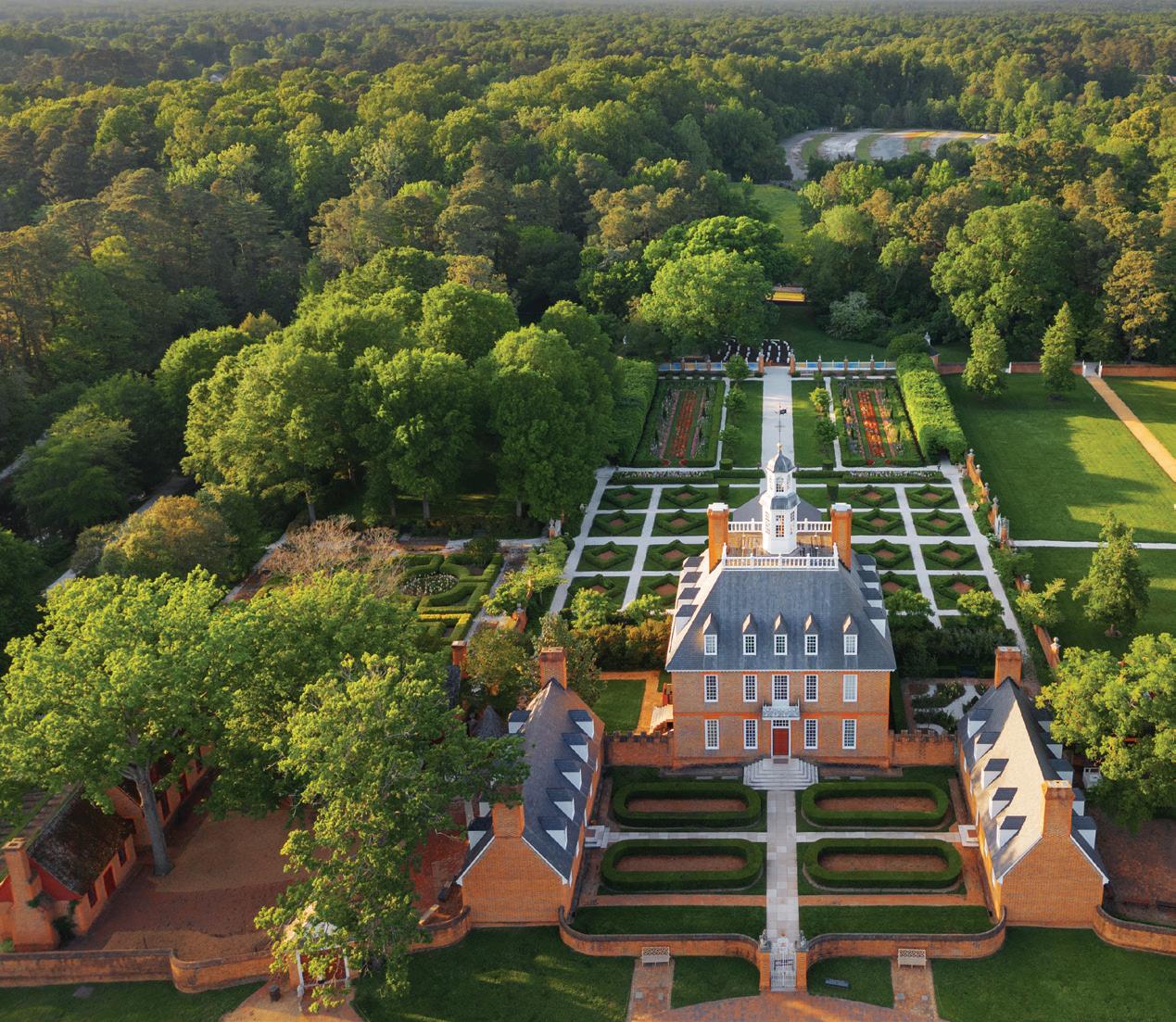
BY RACHEL CRICK
In the cradle of U.S. Colonial history, Williamsburg, Virginia, stands out. It’s part of Virginia’s Historic Triangle, consisting of some of the oldest English settlements in the country. Its role in the birth of a new nation is hard to overstate.
Williamsburg brings that history to life for visitors with a collection of museums, including the largest living history museum in the world. Its charms aren’t only historic, however. It also offers plenty of outdoor recreation, fun attractions, group dining and a selection of wineries and breweries.
“Williamsburg is an iconic destination,” said Ally Ramello, group sales manager at Visit Williamsburg. “We love welcoming groups of all sizes.”
The 2026 Select Traveler Conference will be held in

“Williamsburg is an iconic destination. We love welcoming groups of all sizes.” — ALLY RAMELLO, VISIT WILLIAMSBURG
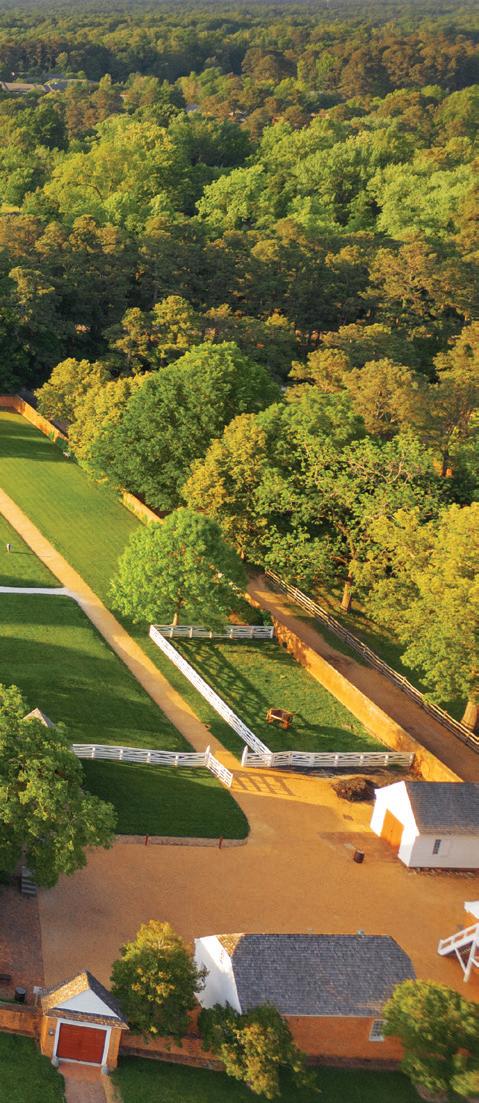
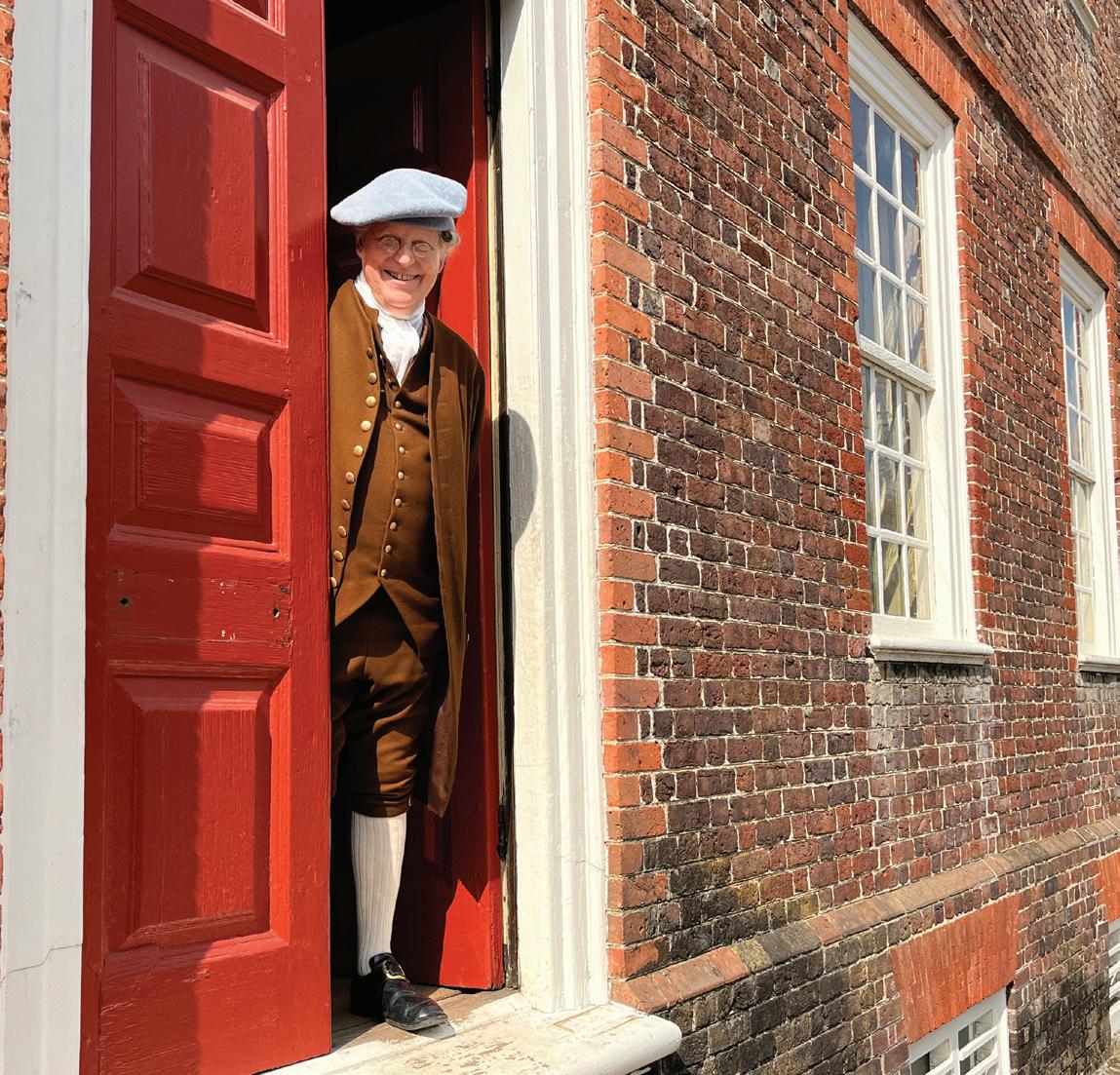

Williamsburg, February 15–17. In addition to the networking opportunities for travel buyers and sellers, delegates will get to walk in the footsteps of early Americans — an especially relevant experience in 2026, which will be filled with celebrations commemorating the country’s 250th anniversary. They’ll also get to explore other delights and surprises that await groups in this fascinating Virginia town.
To register for the 2026 Select Traveler Conference, visit selecttravelerconf.com.
Williamsburg’s biggest draw is undoubtedly its long list of historical offerings. First founded in 1632, it became Virginia’s capital city in 1699, a title it retained until 1780. It’s part of what’s known as the Historic Triangle,
along with nearby Jamestown and Yorktown. Williamsburg played a key role in American Colonial history and the Revolutionary War.
The top historic attraction in the area is Colonial Williamsburg, the largest living history museum in the world. It tells the story of the nation’s founders as well as the underexplored narratives of everyday working people, women, enslaved people and Indigenous people of the area. With 89 18th-century buildings and many others that have been reconstructed, Colonial Williamsburg gives visitors a taste of life during the Colonial period, complete with historical reenactors, many of whom demonstrate trades of the time.
“Costumed interpreters walk around town or perform, and guests can interact with them,” Ramello said. “You
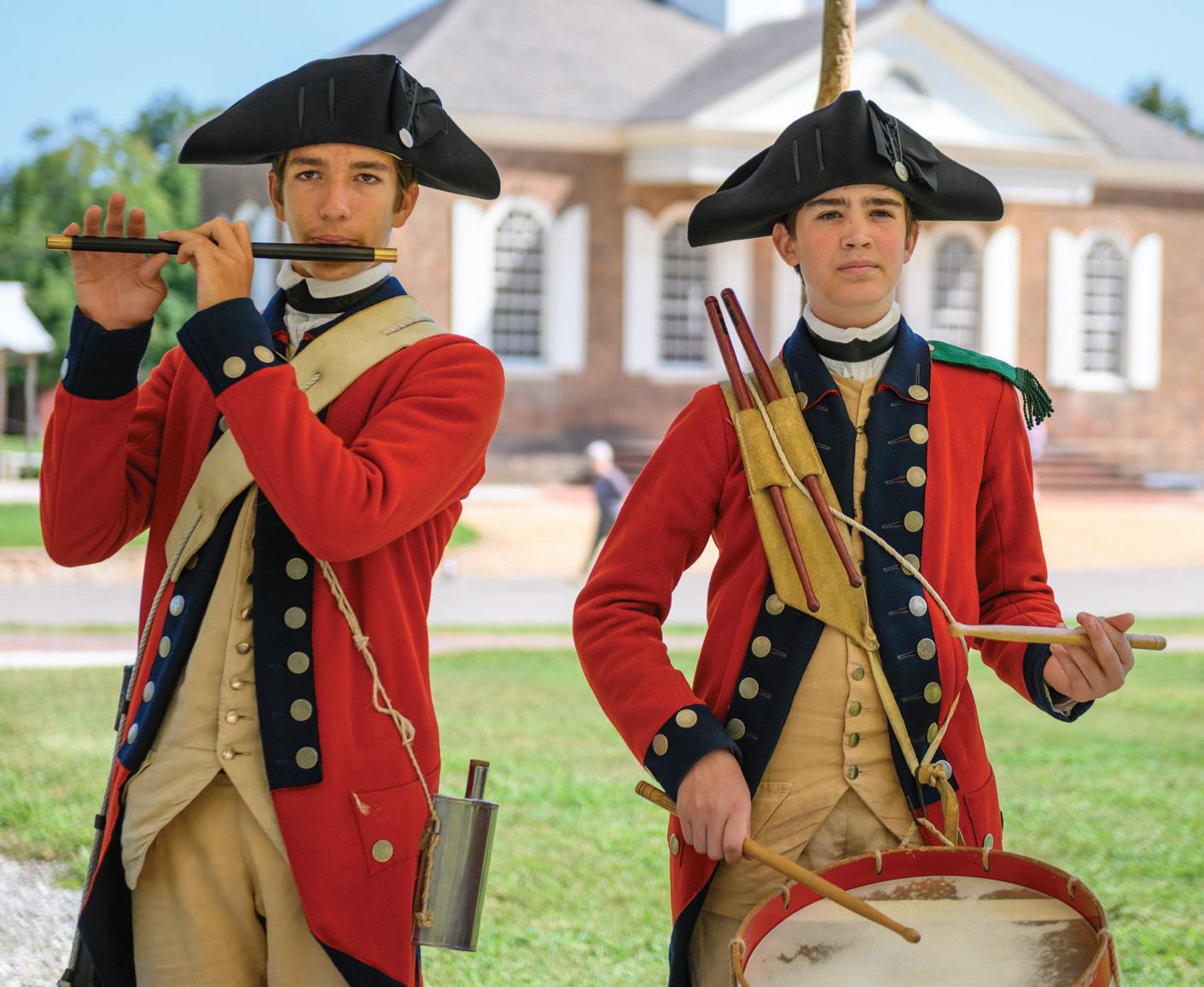
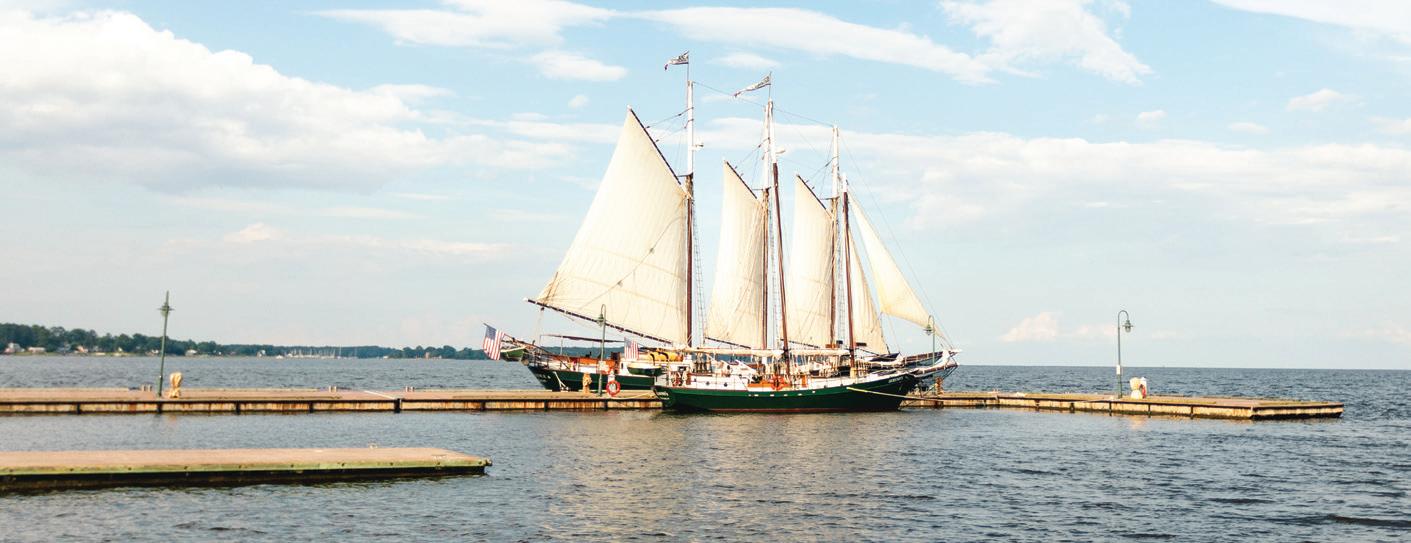
might just see George Washington interacting with visitors.”
While in Williamsburg, groups should also head to the nearby Jamestown Settlement, another museum that recounts the history and culture of the first permanent English colony. It also explores the Indigenous history of the area. Museum offerings include galleries full of centuries-old artifacts, films and interactive exhibits.
To round out their experience of Colonial Virginia, groups can visit the American Revolution Museum at Yorktown, which explores the region’s critical role in the Revolutionary War.
All three historic sites offer group rates. Tours can be guided or self-guided depending on availability and preference. These offerings are made especially enticing in 2026, the 250th anniversary of the signing of the Declaration of Independence.
“Where else can you walk in the footsteps of history?” Ramello said. “This is where the nation was born, and it

“Where else can you walk in the footsteps of history? This is where the nation was born, and it has a special meaning because next year is the 250th anniversary of American independence.”
— ALLY RAMELLO, VISIT WILLIAMSBURG



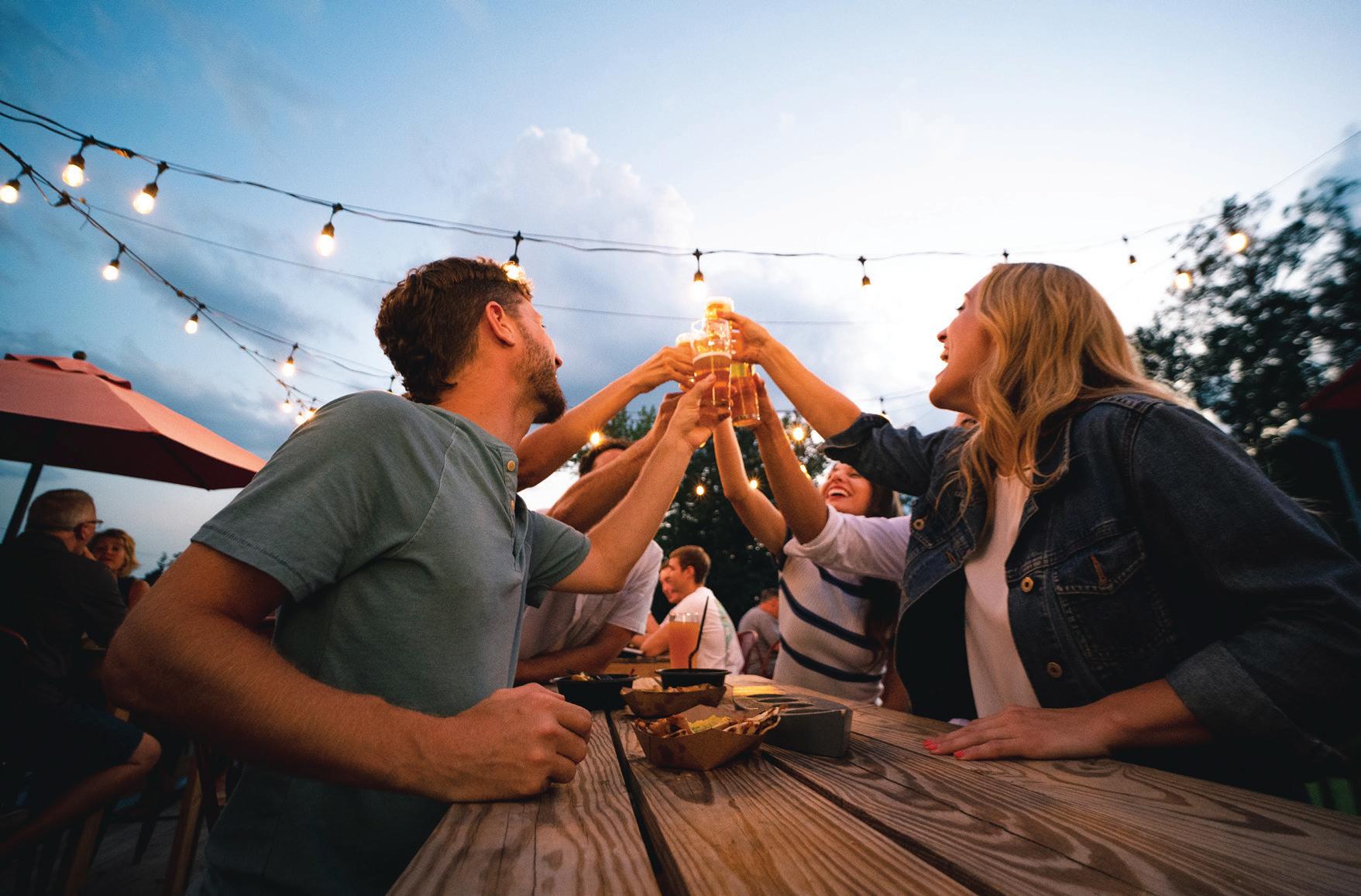
has a special meaning because next year is the 250th anniversary of American independence.”
Colonial Williamsburg will be hosting several events throughout the year to commemorate the 250th anniversary of the nation, including a special July Fourth celebration. Additional celebrations throughout the state are expected all year long.
In addition to its assortment of history museums, Williamsburg has a wide variety of culinary offerings for group visitors to explore.
History is Williamsburg’s bread and butter, so it should come as no surprise that many of its most popular restaurants are historic taverns. King’s Arms Tavern, found in Colonial Williamsburg, serves recipes straight out Colonial-era cookbooks, from “Mrs. Vobe’s Prime Rib of Beef” to roast ducks and onion “pyes.”
FEBRUARY 15–17, 2026
“Peanut soup is one of their most famous recipes,” Ramello said. “It’s a well-kept Colonial recipe that has been brought back to life from the historical research.”
Another Colonial Williamsburg institution is Christiana Campbell’s Tavern, which was once frequented by George Washington. The restaurant is known for its historically inspired seafood dishes. Guest favorites include crab cakes and spoonbread, and the menu also features oysters, fried chicken, fried fish and potato dumplings.
Outside of Colonial Williamsburg, visitors will find plenty of group-friendly restaurants, including Sal’s By Victor, an Italian restaurant serving pizza and pasta; Captain George’s Seafood Restaurant, a seafood buffet; Aberdeen Barn Steakhouse, featuring an open-hearth grill and a raw bar; and Pierce’s Pitt Bar-B-Que, serving tender pulled pork, chicken and ribs.
The region also has a winery and several breweries that offer a range of flavors and experiences for groups.
Williamsburg Winery is known for its Bordeaux-style blends, but it offers a range of varietals, from chardonnay to viognier, a once-forgotten grape. While one of the winery’s tasting rooms is in Colonial Williamsburg, the vineyard is a great stop for travelers looking to enjoy the serenity of the vineyards or even learn more about the wine-making process.
“It offers winery tours, as well as private rooms that cater to small and large groups,” Ramello said. “Sometimes groups can have a meal in the winery or a tasting.”
Precarious Beer Project, a brewery connected to Amber Ox Public House, offers seasonally inspired beers and pub food with a hip atmosphere. The Virginia Beer Company, a beloved staple in the community, serves small-batch beers and a selection of IPAs, saisons and pale ales. Another option on the water, Billsburg Brewery lets groups enjoy brews from the outdoor setting directly on a tributary of the James River.
Its idyllic Virginia setting means Williamsburg has plenty of natural beauty to share with visitors. They can experience the local flora and fauna during visits to area parks and beaches, as well as state parks like the Colonial National Historical Park. Williamsburg is also home to a dozen championship golf courses.
Williamsburg has abundant waterways to explore, including the James and York rivers, making boating and other water activities a lovely way for groups to spend their afternoons during the warmer seasons. Groups of up to 25 can take a sunset cruise on a sailboat.
Another outdoor attraction perfectly suited to thrill-seekers and student groups is Busch Gardens, which has been recognized as the world’s most beautiful amusement park since 1990. The 130-acre park combines modern roller coasters with a historic atmosphere, as well as animal
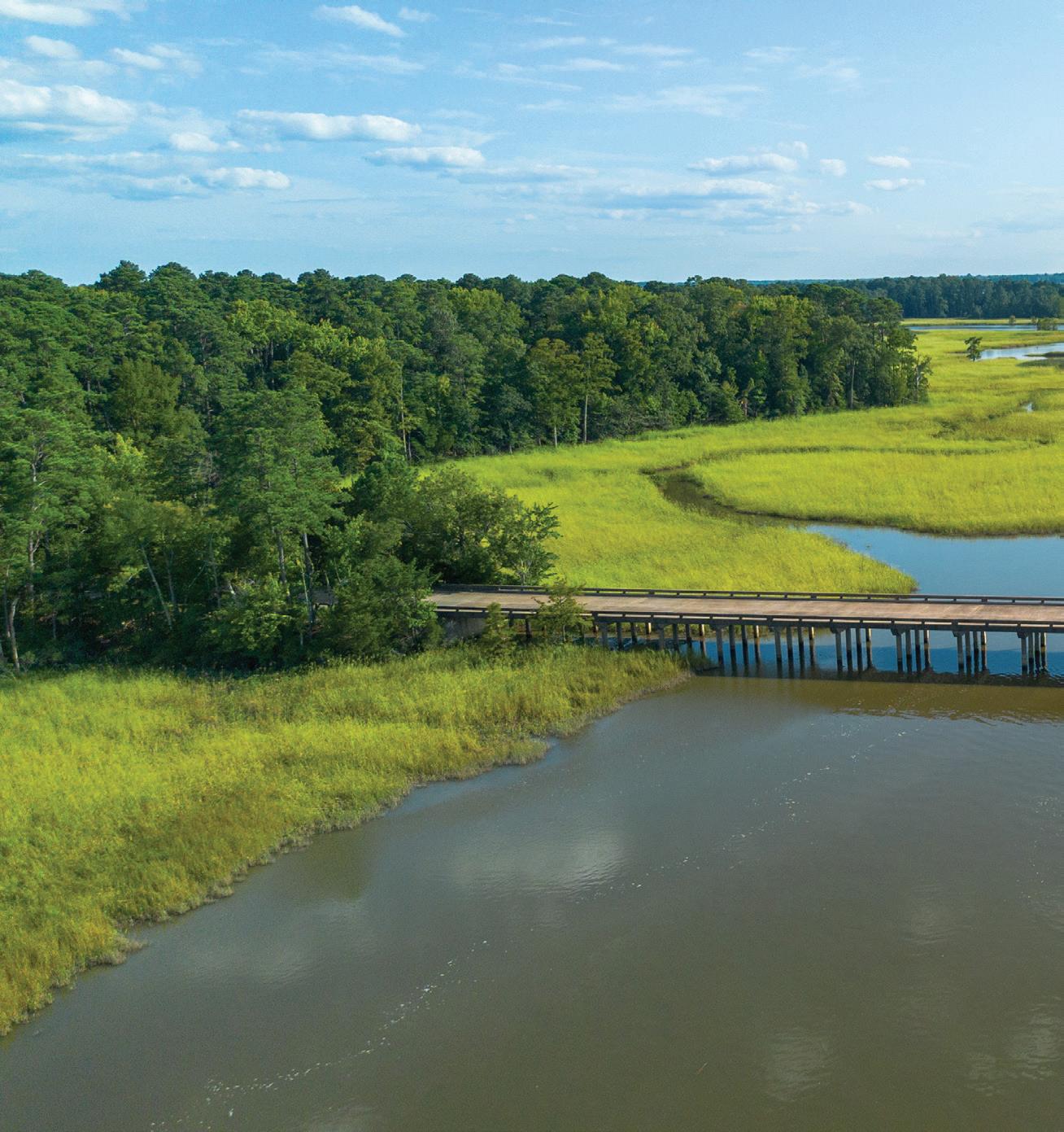
Williamsburg area wetlands
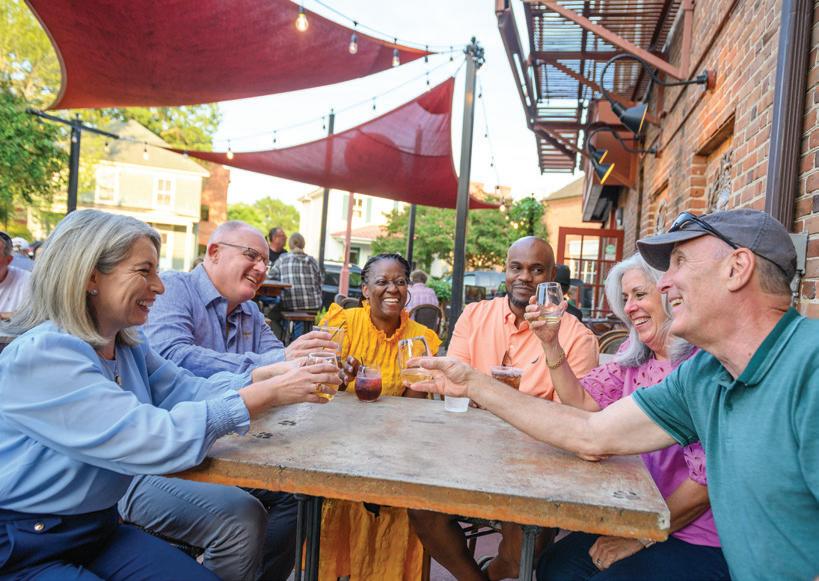
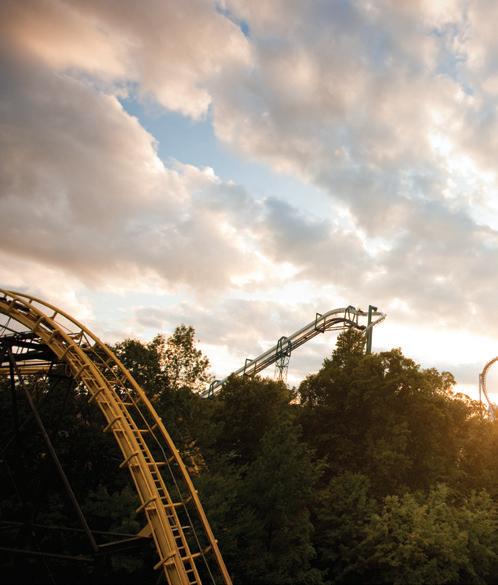
exhibits. Gray wolves, Clydesdale horses, Scottish Highland cattle and red fox are among the animals that live in the park.
Groups can spend an afternoon in the park with a guided experience of their choice, including up-close encounters with animals, a roller coaster insider tour, a river cruise or a park history tour.
Go Ape Zipline and Adventure Park is another top attraction for thrill-seeking groups and features extensive zip line and ropes courses, as well as axe throwing and an escape room.

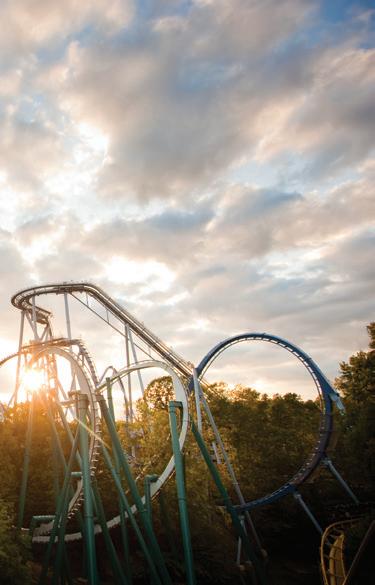


























































































































































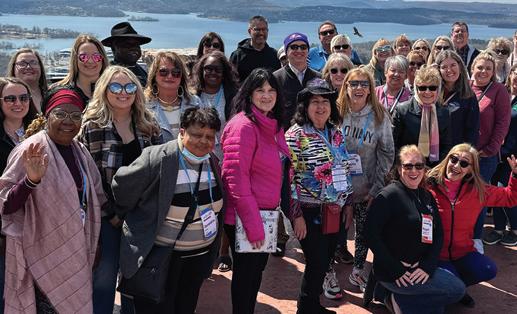












































































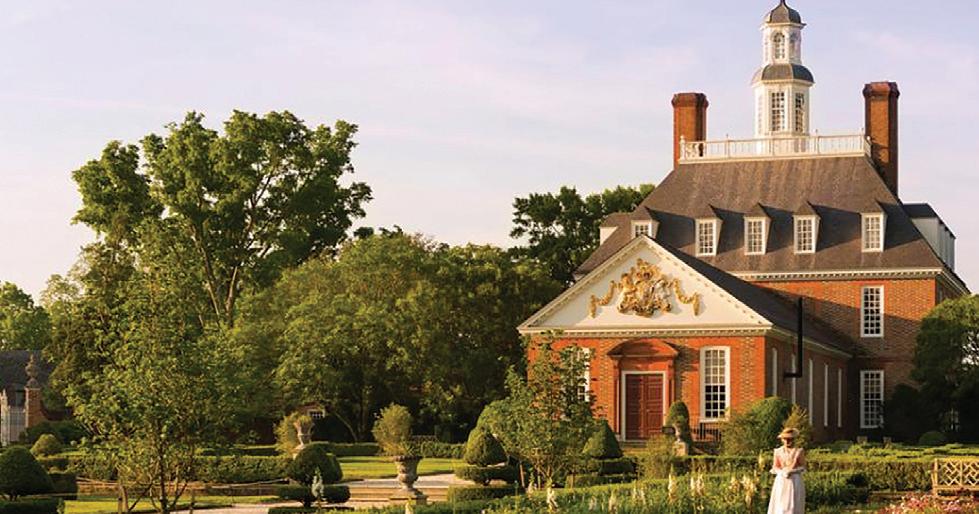




















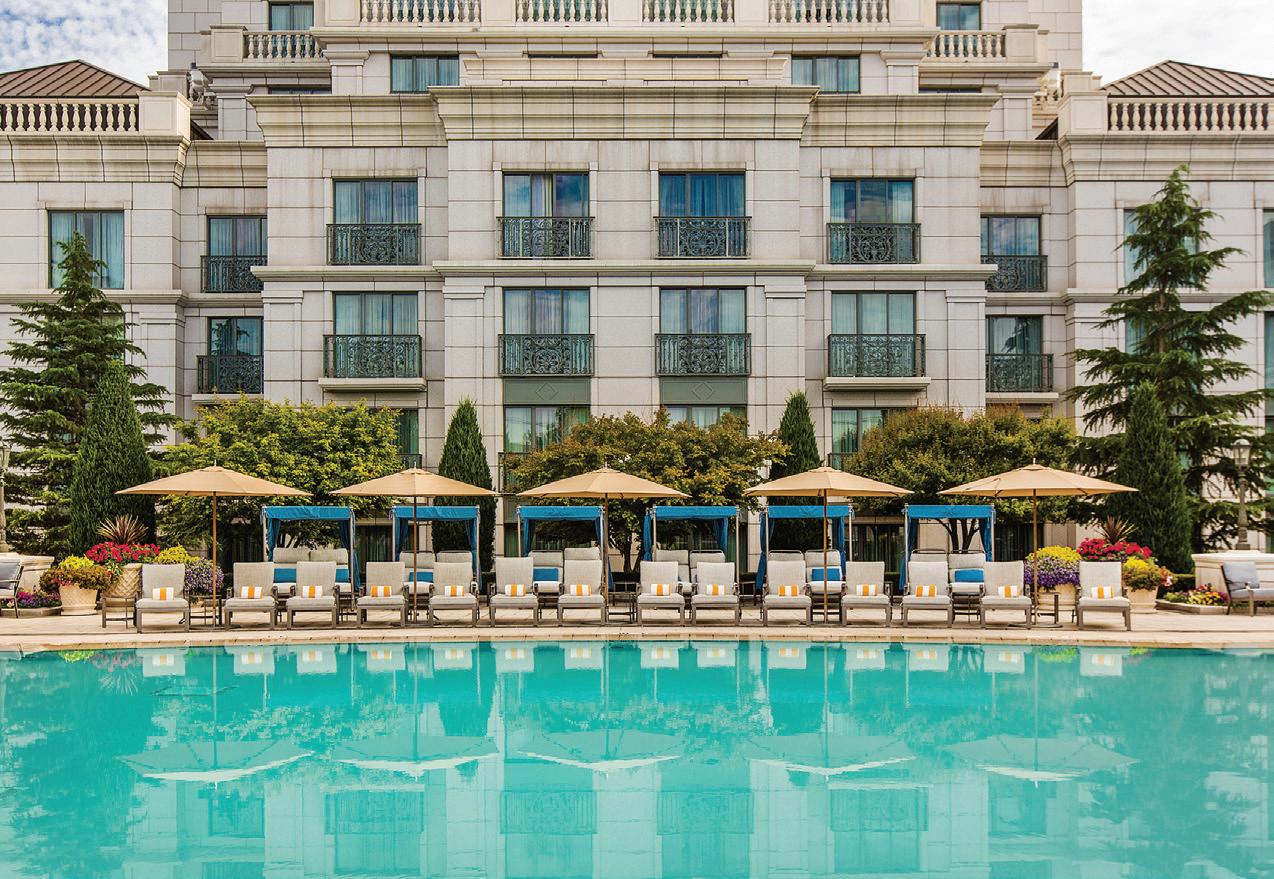
BY CYNTHIA BARNES
Every planner knows that the destination can make or break the entire travel experience. Although the hotel property you choose for a group matters, the destination itself sets the stage for a memorable and successful trip. If you’re looking for a great resort-focused trip, choosing a strong destination allows you to balance a variety of interests and experiences while providing unique adventures and activities for your group.
The perfect destination will transcend mere scenery, providing a backdrop to activities and experiences that bring your group together, please a range of different personalities and fulfill a host of varying requests, all while giving planners a plethora of choices to create the perfect retreat.
Here are five resort-heavy destinations that offer outstanding accommodations along with transformative environments.
Seven hundred postcard-perfect islands in the Bahamas give travel planners a lot of options. From celebrity-strewn nightspots in Harbour Island to the idyllic, empty beaches of less touristy Eleuthera, the Bahamas truly has it all. The impossibly azure waters surrounding the islands are the big draw, luring sport fishers, snorkelers and sun-seekers who just want to relax on the sand. There are also distilleries, casinos, colorful markets and a wealth of historical attractions and museums.
For top-notch elegance and a prime beachfront location on Paradise Island, The Ocean Club, A Four Seasons Resort, is a popular choice. (Fans of the James Bond franchise will recognize the resort from “Thunderball” and “Casino Royale.”) Its 35 immaculately landscaped acres boast four miles of white sand beach, Versailles-inspired gardens, an oceanfront swimming pool and medieval marble cloisters that once stood in France. (Visitors may stroll through the cloisters without being guests of the hotel.)

For five unique hotels, more than 40 restaurants and the world’s largest open-air marine habitat, look no further than Atlantis Paradise Island Bahamas. Modeled on the fabled sunken kingdom, accommodations range from honeymoon-worthy hideaways to family-friendly multigenerational suites, and resort amenities include casinos, golf, a teen nightclub and an enormous water park. A day pass allows access to the resort pools, water park, marine habitats and five miles of pristine beaches.
bahamas.com
At almost 1,500 feet below sea level, the shores of the Dead Sea are Earth’s lowest spot on dry land. And although the sea’s hyper-salinated waters are devoid of life, the surrounding areas are teeming with a rich array of attractions and accommodations, providing a variety of options for groups of all sizes. Most of the resorts on the Jordanian side are located in the north, about an hour’s drive from the capital of Amman.
Visitors throughout history have been drawn to the mineral-rich and therapeutic waters, which are nearly 10 times as salty as the ocean and so buoyant that it’s impossible to sink. Even Cleopatra was a regular visitor, praising the healing and beautifying properties of the mud. Predictably, there’s a great beach scene and a rich spa culture. At over 100,000 square feet, the spa at the Kempinski Hotel Ishtar Dead Sea is one of the largest in the Middle East. Its Babylonian grandeur is great for groups, but the spa and pools are open to non-guests as well. The Dead Sea Marriott Resort & Spa also provides a great base for day trips, including to the hot mineral springs and waterfalls at Ma’in or to the world-famous ruins at Petra.
visitjordan.com

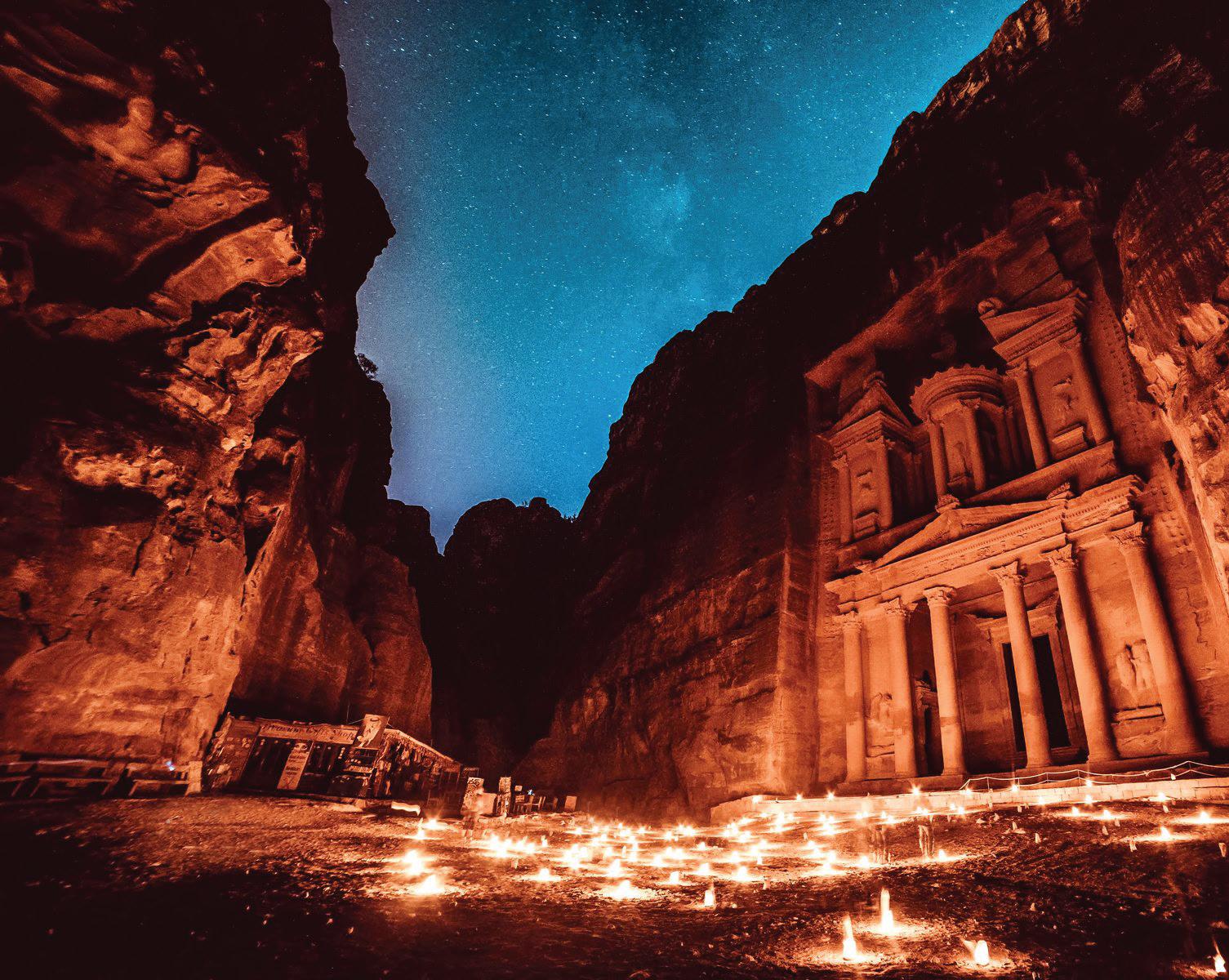
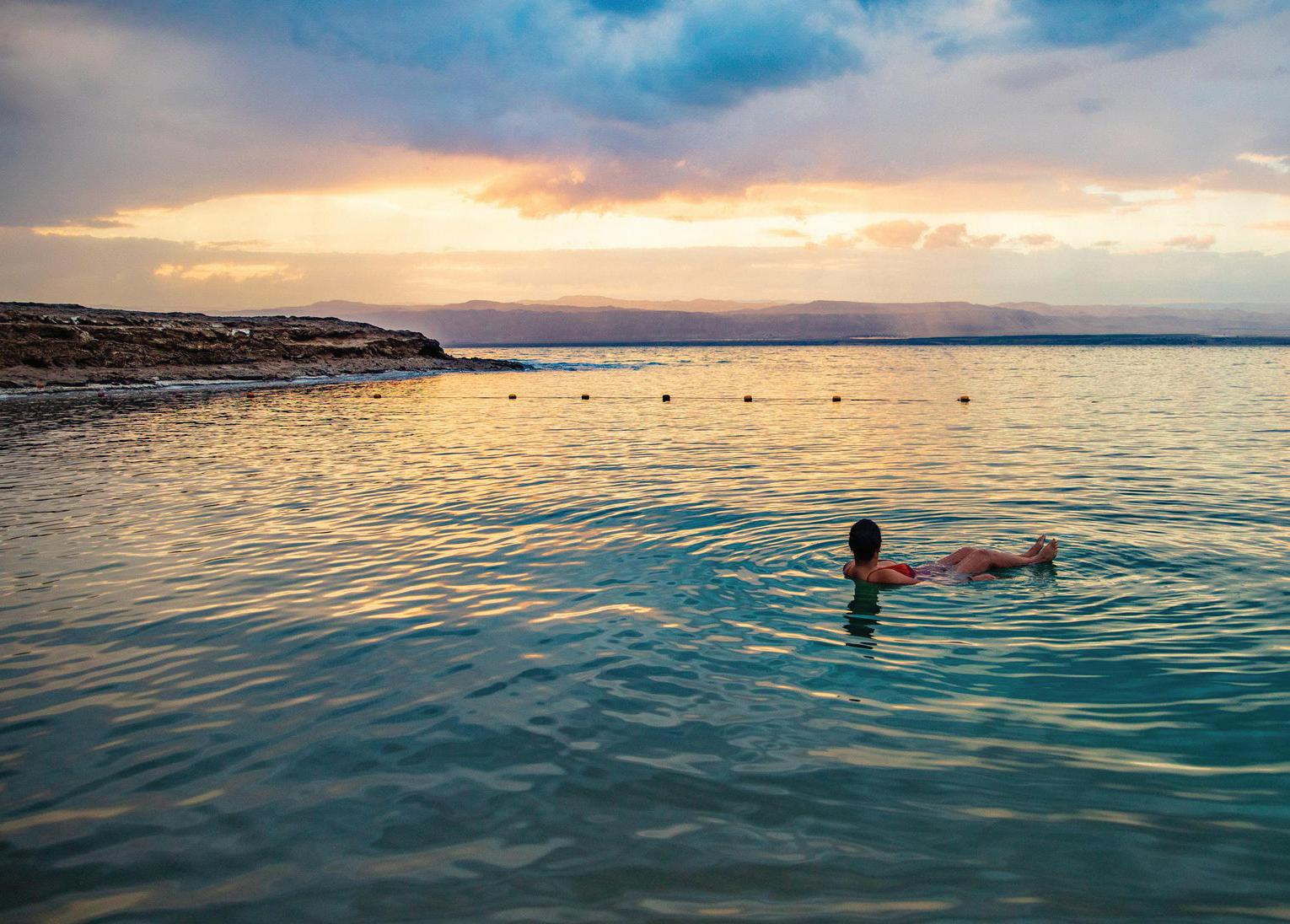

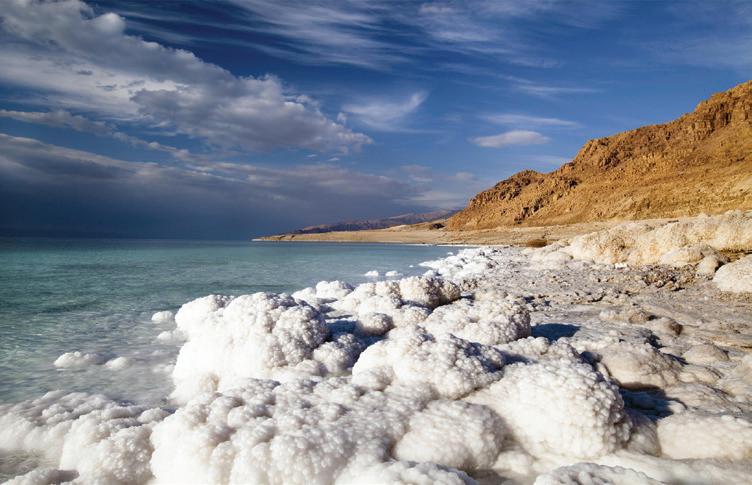
Situated on the edge of the lake it was named for, Salt Lake City provides a wealth of culture and activities set amid stunning scenery. The capital of Utah, SLC is famed as the headquarters of The Church of Jesus Christ of Latter-day Saints and home to the church’s most important temple. The city is surrounded by the Wasatch Mountains, a four-season playground offering wildflower hikes, white-water rafting, biking and snow sports, with four ski resorts just 30 minutes outside of downtown. The city will host the Winter Olympics again in 2036.
Downtown attractions are easily accessed by foot, light rail or bus, perfect for attending a Utah Jazz game, catching a performance at the Eccles Theater, exploring family history at the FamilySearch Library or taking in an organ


Salt Lake City’s Temple Square

Salt Lake City surrounded by mountains

Downtown Salt Lake City
recital in the Tabernacle at Temple Square. The Mormon church’s worldwide missionary outreach has given SLC a surprisingly cosmopolitan flavor, which is reflected in its culinary scene. Turkish, Malaysian, Ethiopian and Himalayan spots are all found downtown. The trendy but historic Sugar House neighborhood is also a fun area to stroll for nightlife, coffee, breweries and boutiques.
The beautifully appointed and art-filled Grand America Hotel is an excellent choice for groups, as is the newly opened Asher Adams, an elegant homage to rail travel that’s built into the historic Union Pacific Railroad Depot. visitsaltlake.com




Some of the best beaches in the Sunshine State are found in Clearwater, which sits on a narrow island off Florida’s west coast, just 25 miles from both St. Petersburg and Tampa. At this coastal gem with sugar-white sand and emerald waters, visitors will find attractions that include a renowned marine aquarium and nightly sunset celebrations at Pier 60. Sand Key Park is the place for nature lovers, while culture aficionados will applaud performances at Ruth Eckerd Hall and the BayCare Sound amphitheater. Sports lovers won’t want to miss watching the Philadelphia Phillies face off against rivals during MLB’s spring training season. The entertainment district, Beach Walk, provides unique shopping, dining, nightlife and fun for all ages. Offshore, the gulf beckons with sport fishing, sailing and an array of water sports, from mild to wild. Planners can choose from a wide array of hotels and resorts in Clearwater and the surrounding area. At the recently renovated Sandpearl Resort, guests are treated to expansive views from private balconies, a zero-entry, lagoon-style pool and a 700-foot stretch of pristine beach. The award-winning JW Marriott Clearwater Beach & Spa has elegantly appointed rooms and suites in addition to one-, two-, and three-bedroom residences with in-unit laundry facilities and kitchenettes that are perfect for families or groups.
visitstpeteclearwater.com

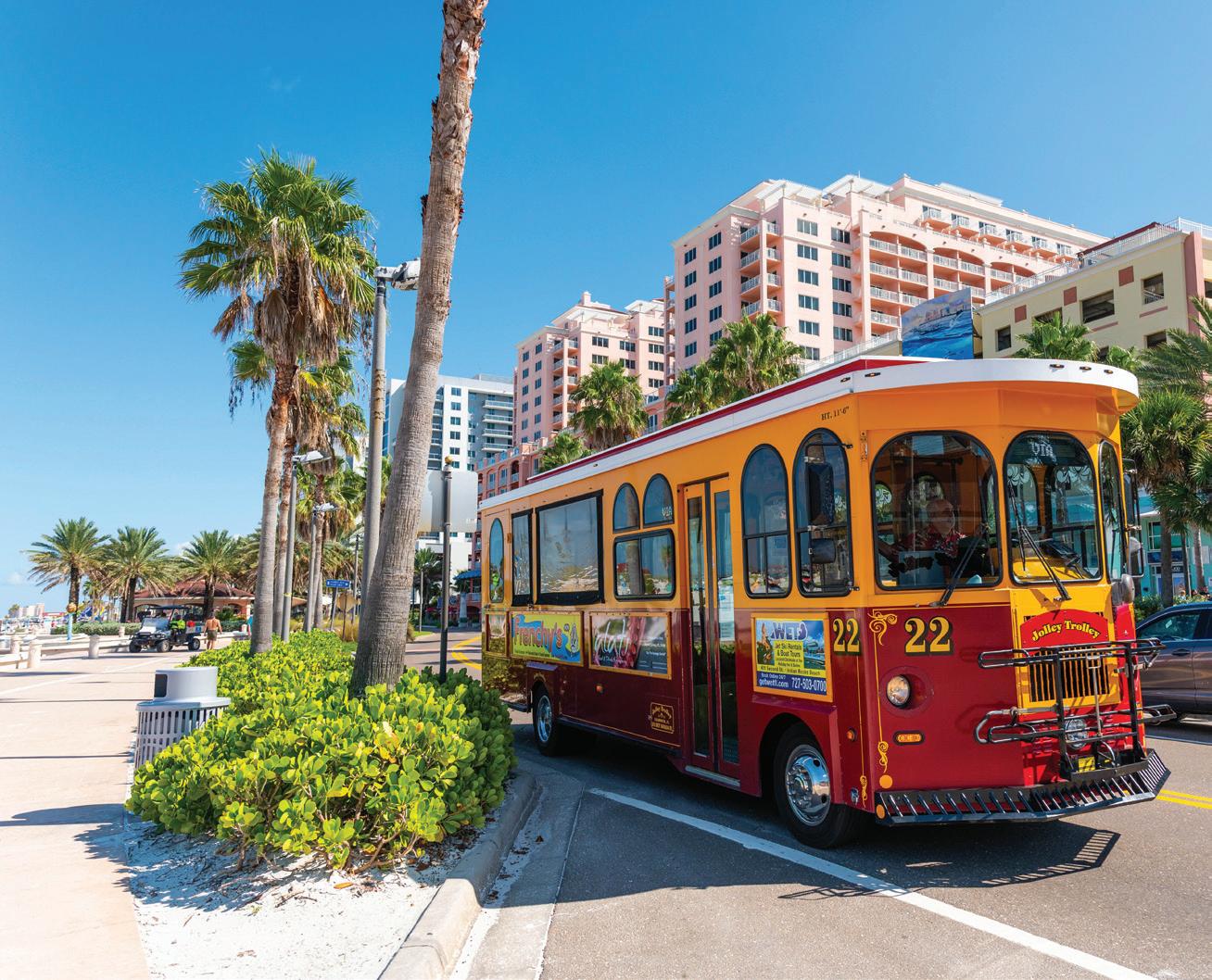

With year-round sun and more than 200 courses in the surrounding area, Scottsdale is rightfully known as a golf mecca. But there’s much more to this Sonoran Desert oasis, including a vibrant arts scene with more than 80 galleries, a well-attended weekly art walk and a plethora of public art.
For a taste of the Old West, groups will love MacDonald’s Ranch, where they can tour on horseback, ride in a stagecoach or feast around a campfire during a down-home cowboy cookout. Old Town Scottsdale is great for strolling, shopping and sipping. With more than 5,000 items from around the world, the Musical Instrument Museum is truly one of a kind. Iconic architect Frank Lloyd Wright

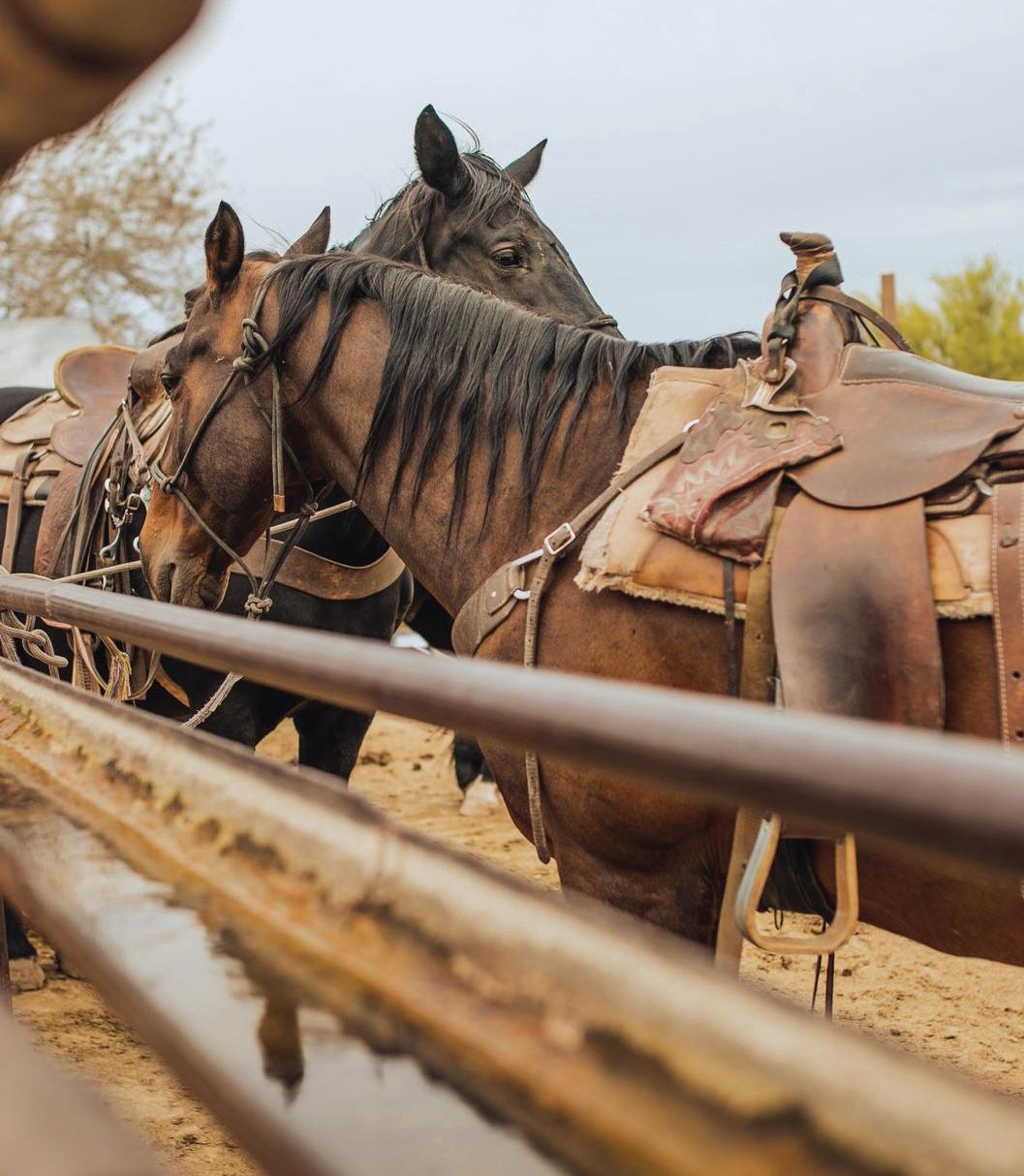
BY JENNA MCKONE
fell in love with the landscape, and a visit to Taliesin West, his beloved winter home and studio, is a must. A variety of guided and self-guided tours are available, and the gift shop offers a gorgeous selection of souvenirs.
With 750 luxurious guest rooms, six pools, five restaurants and two golf courses, the Fairmont Scottsdale Princess offers an exquisite stay for groups, as do The Phoenician and The Westin Kierland Resort & Spa. The pools and spas at all these properties are well worth an afternoon of lounging, so your group may want to consider a day pass, even if they’re not staying there as guests. experiencescottsdale.com
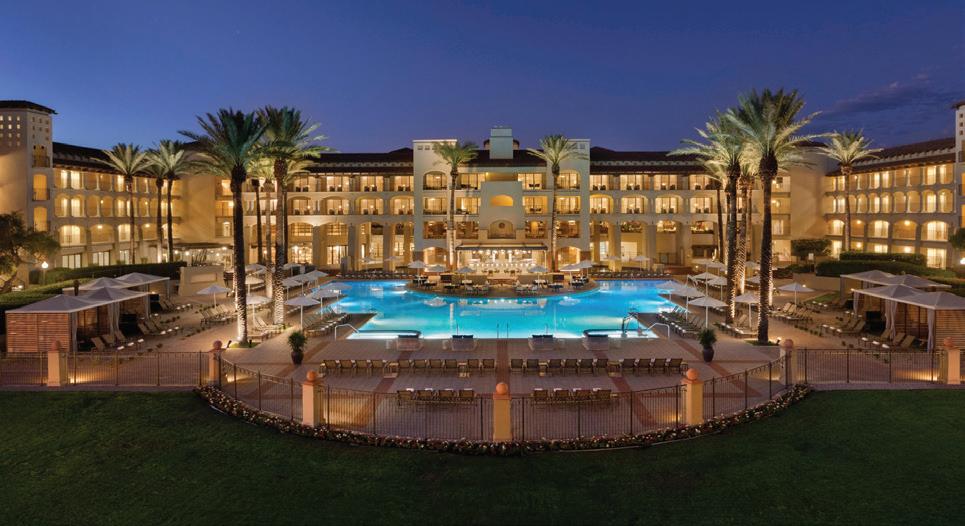







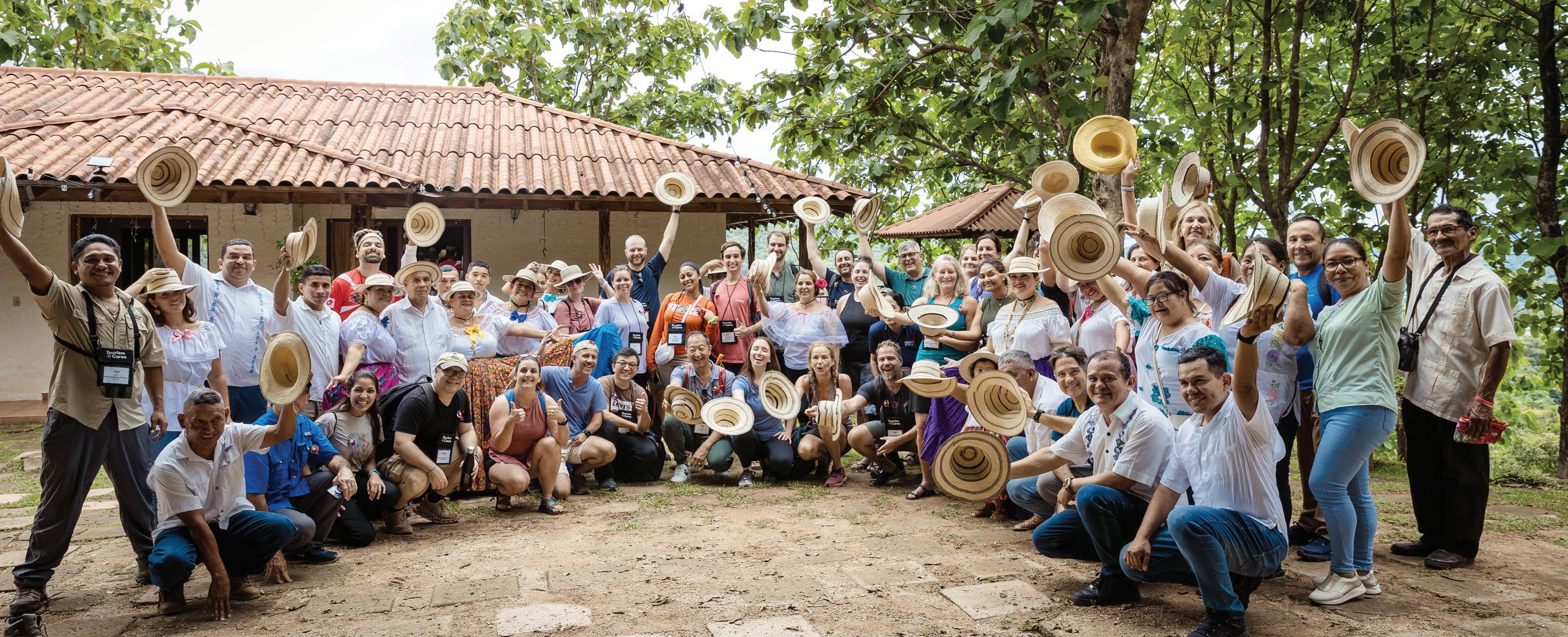





BY ROBIN ROENKER
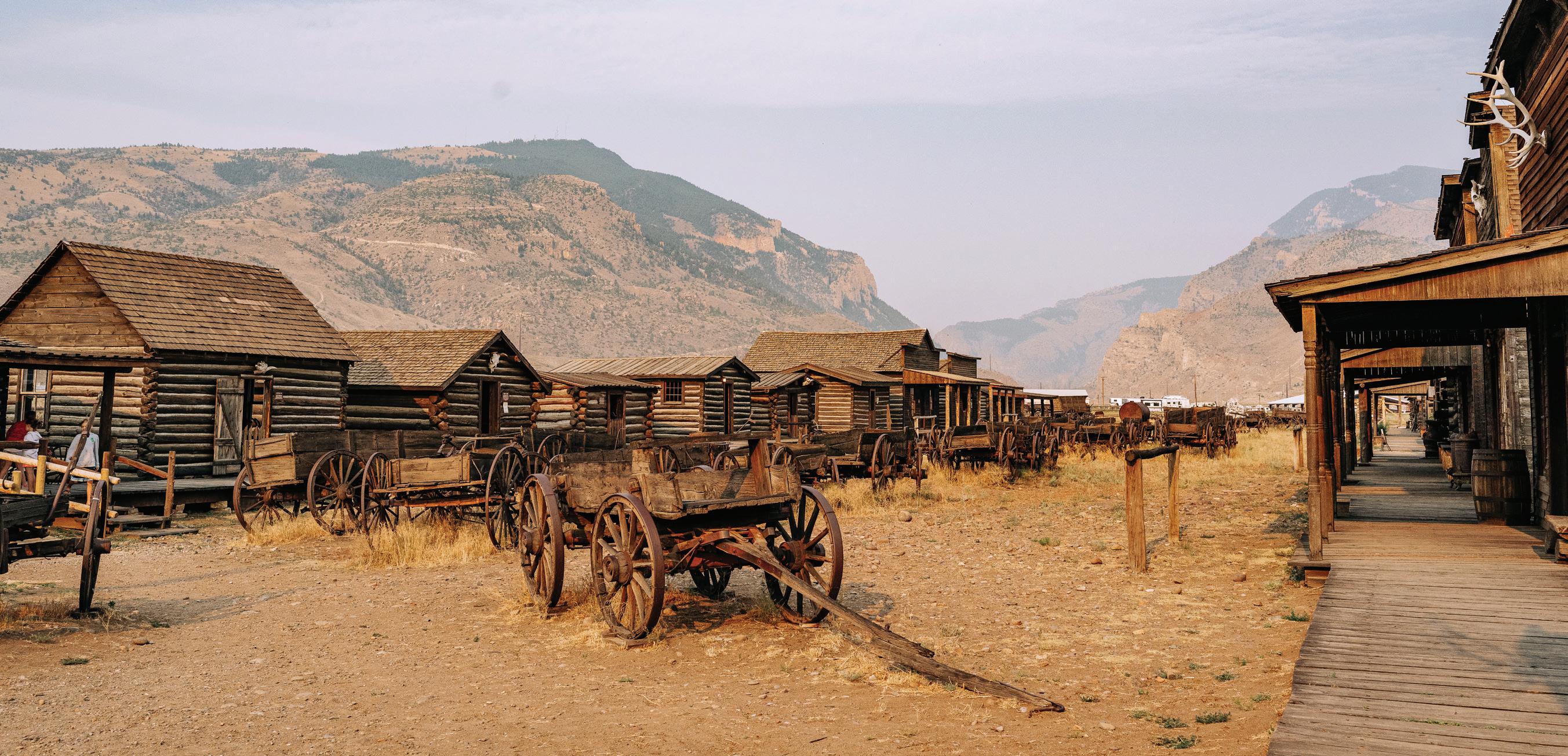
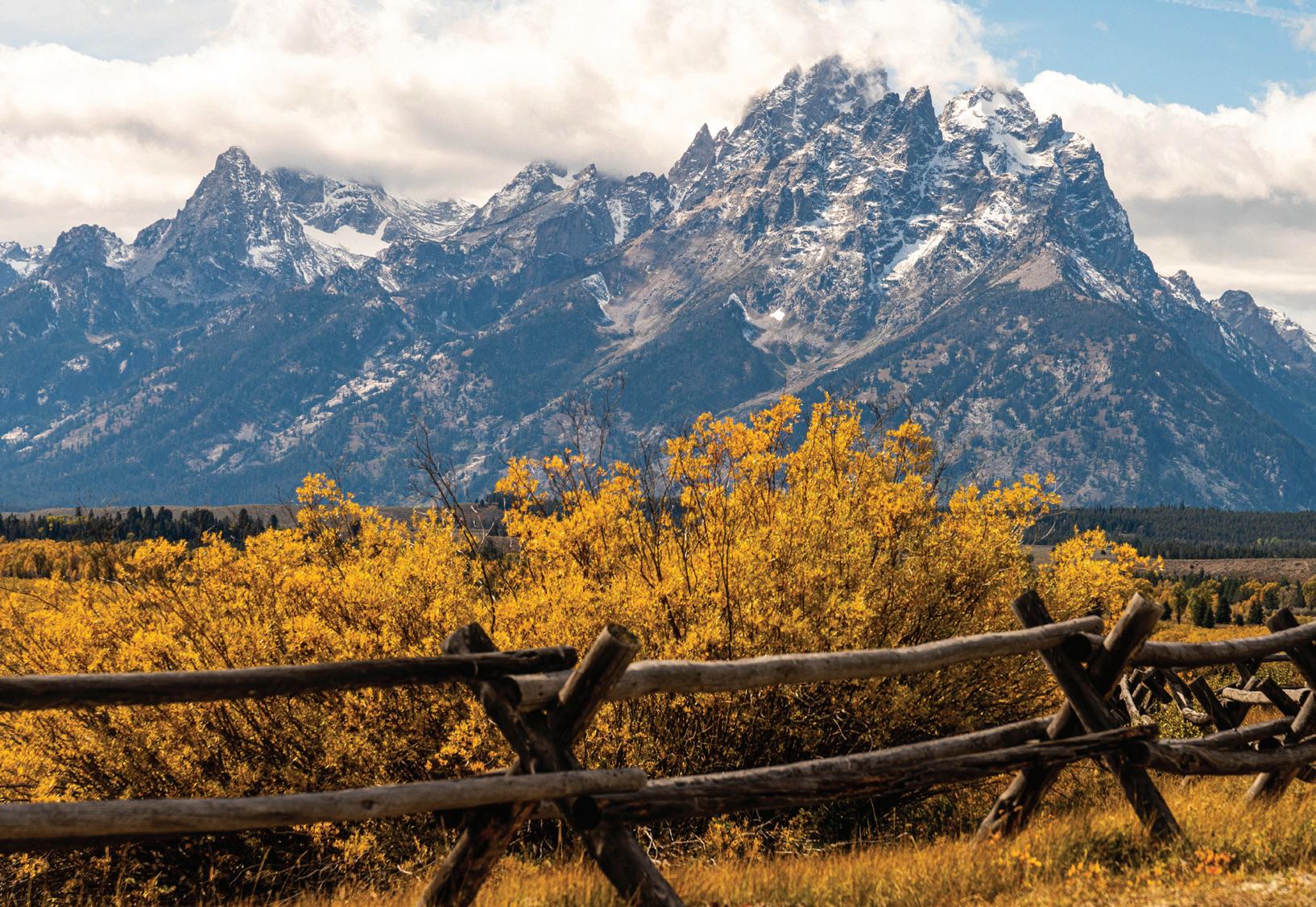
Wide open spaces — and breathtaking ones, at that — are easy to find in Wyoming.
From the majestic peaks of Grand Teton to the iconic vistas of Yellowstone, Wyoming is awash in natural beauty. And there’s plenty of room here to take it all in. Though it is the country’s 10th largest state by land area, Wyoming is the nation’s least populated state. In fact, it’s said there are more pronghorn antelope here than people.
So, whether you’re looking for a nature escape, national park adventures or a taste of the authentic American West, Wyoming has you covered. No matter your itinerary, prepare to be awed by the views.
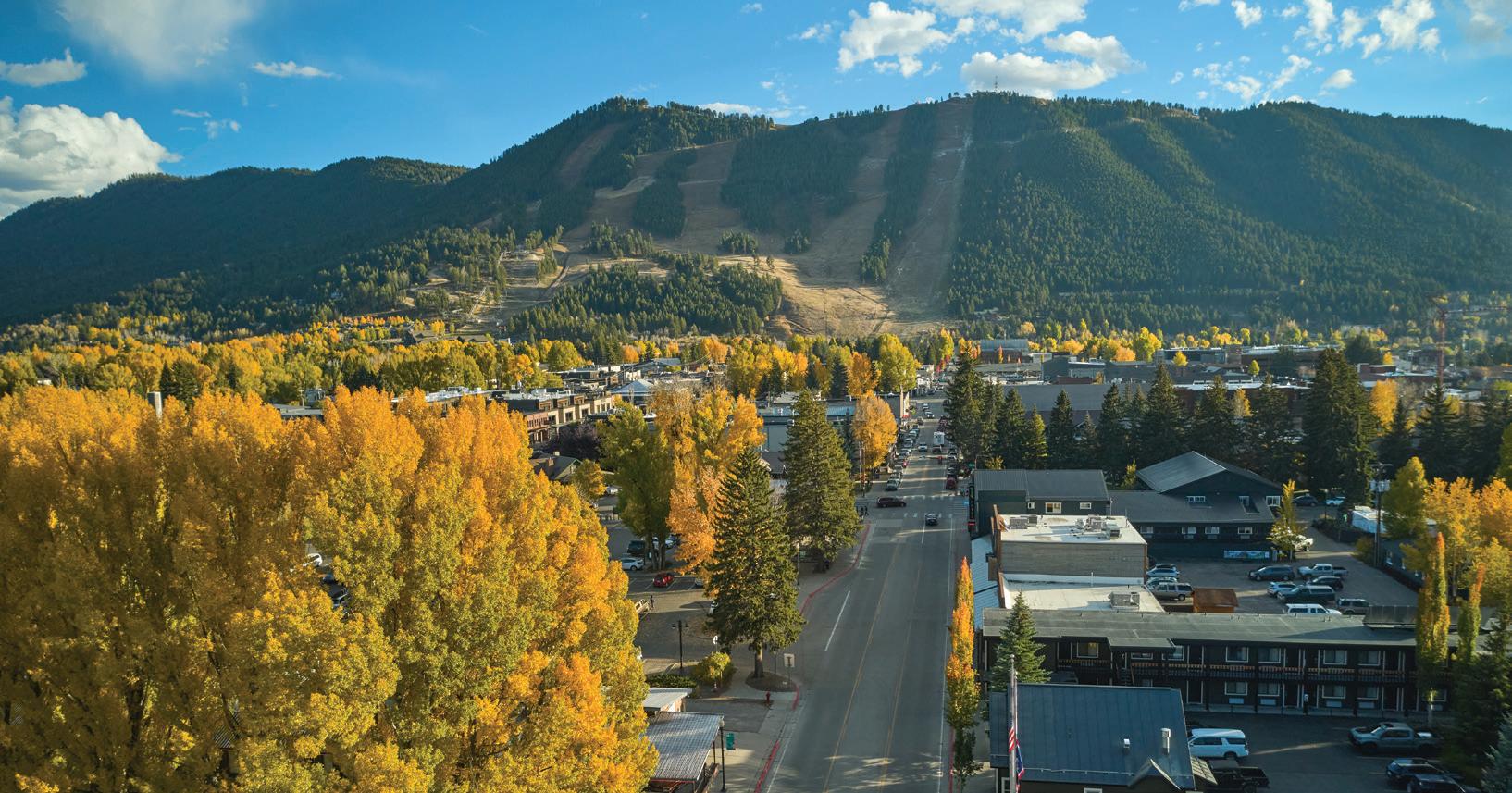
From world-class winter skiing to yearround opportunities to hike, fish, camp and enjoy sightings of the area’s abundant wildlife, Jackson Hole is an adventure lover’s paradise. The residents of Jackson, which is the main town in Jackson Hole valley, know what they have here is special, and they’re passionate about preserving and protecting the area’s natural beauty. Still, they graciously welcome visitors eager to experience the region’s charms.
Given the popularity of the destination, groups willing to plan a trip during non-summer months — when the area and nearby national parks are less crowded — often find greater flexibility to set their ideal itineraries, along with more affordable lodging rates.
“There’s so much to do here in fall, winter and spring,” said Rob Nelson, director of destination global sales for the Jackson Hole Chamber of Commerce. “May, in particular, is a great time because the animals and wildflowers are out. But if you’re here before Memorial Day, you kind of beat the crowds a little bit. October, also, is just a magical time, since the leaves are changing, the elk are bugling, and the nights are a little cooler.”
With early planning, groups can access local-favorite dining spots well equipped for larger parties, including downtown restaurants Roosevelts and Hand Fire Pizza, which offer easy walking access to Town Square and its many shops, galleries and gift stores. Popular area attractions, including the National Museum of Wildlife Art and the Jackson Hole Playhouse, welcome groups year-round.
Of course, many groups use Jackson Hole as a central base to explore nearby Grand Teton National Park, home to
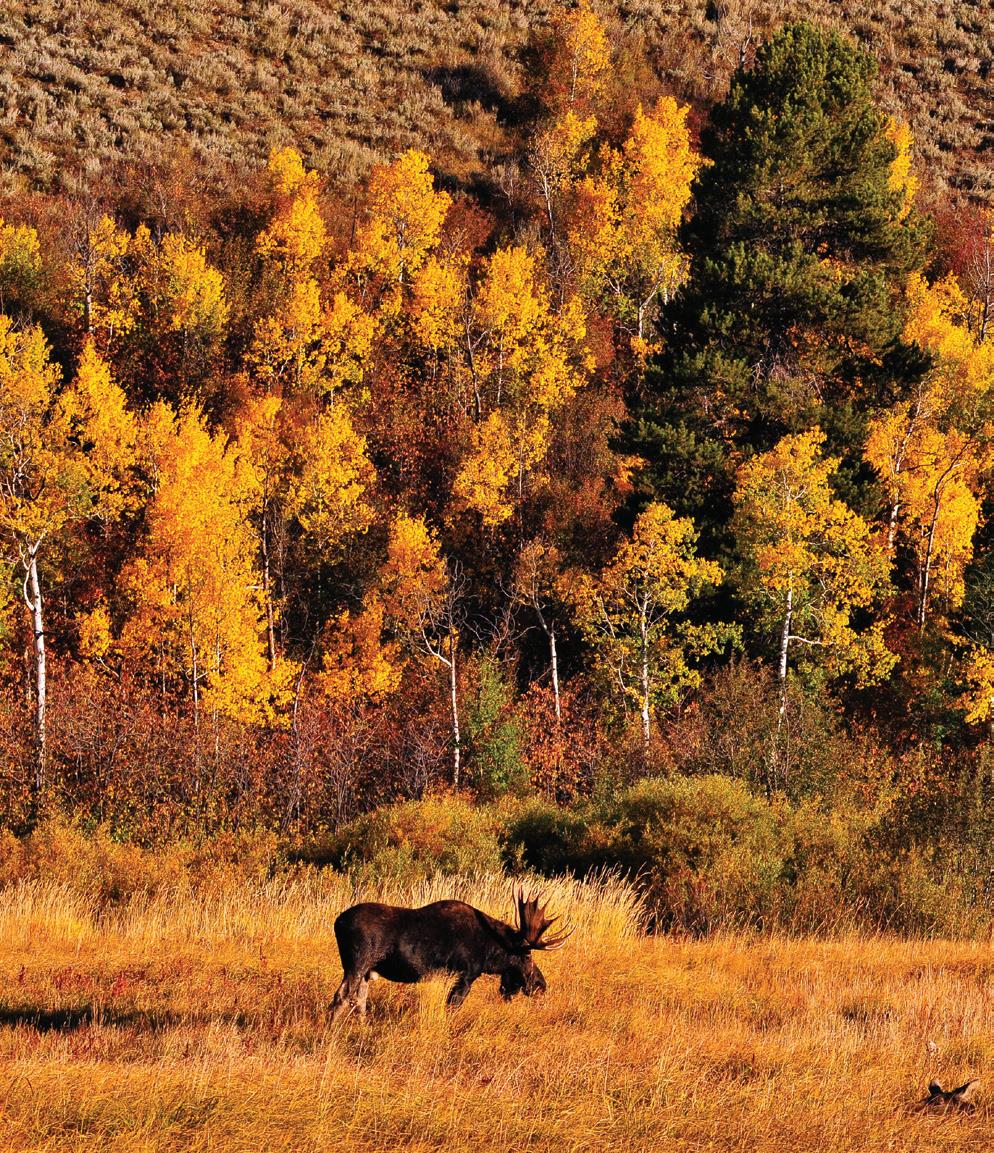
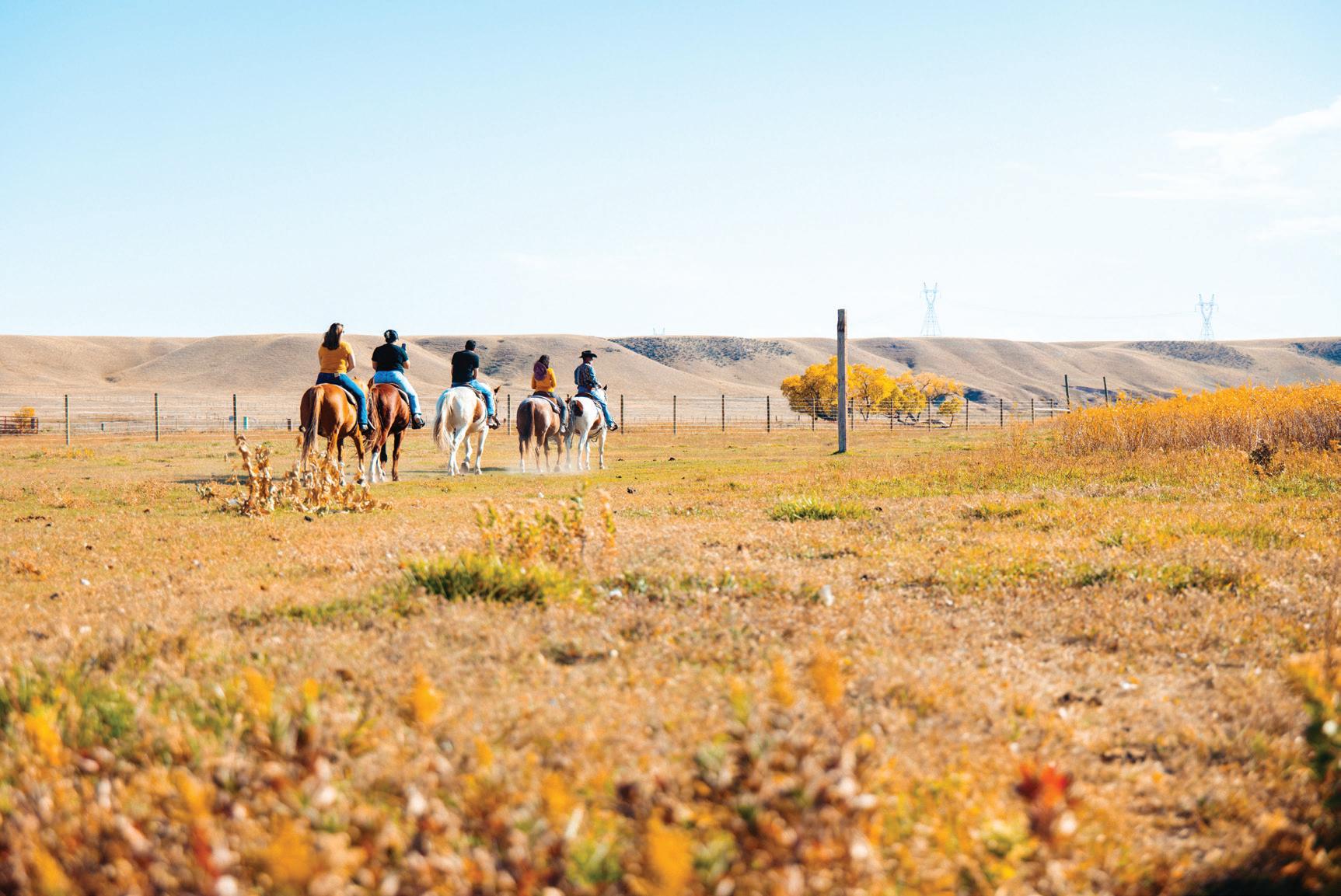
soaring mountain peaks, more than 100 lakes and plentiful opportunities to capture postcard-worthy snapshots of wildlife, from bears, pronghorn and elk to bison, bald eagles and moose.
Those in the know advise getting to the park early in the morning to avoid peak crowds. Once there, Jenny Lake, nestled at the base of the Teton Range, is a must-stop destination, thanks to its wow-worthy, reflective views of Teewinot Mountain and Mount St. John. Groups can enjoy rides across the lake on the Lake Jenny shuttle boat or hike to popular vantage points like Hidden Falls and Inspiration Point.
“I always advise taking a full day in the park because there’s so much to see and then coming back to Jackson to enjoy dinner and nightlife,” Nelson said. jacksonholechamber.com visitjacksonhole.com
Founded in 1867, Cheyenne quickly grew to become Wyoming’s capital and most populous city, as settlers flocked to the area via the Union Pacific Railroad. Synonymous with the American West, the city has hosted Cheyenne Frontier Days — now held the last full week of July and
billed as the world’s largest rodeo and Western celebration — since 1897.
“We have an influx of around 30,000 people a day attending Frontier Days,” said Amber Trevizo, events and special projects manager for Visit Cheyenne. “It’s an incredible event, with a full-scale carnival, a competition rodeo, live demonstrations, top-tier concerts and vendors selling all sorts of cool and unique Western-themed items.”
If your group can’t make it in July, don’t fret. Cheyenne boasts plenty to do year-round, including roughly 20 museums, from the newly opened Cheyenne Children’s Museum to longtime visitor favorites like the Wyoming State Museum, Cheyenne Frontier Days Old West Museum and Cheyenne Depot Museum, which highlight the city’s Western history and early frontier days.
Seven miles south of town, Terry Bison Ranch offers an accessible, hands-on view of ranch life that all ages can enjoy. Guests can go on trail rides, feed bison and visit goats, alpacas and other farm animals. Not far away, the Cheyenne Botanic Gardens offers free admission to its nine acres of curated floral beauty.
The city also boasts an abundance of cultural attractions, including a vibrant
“I always advise taking a full day in the park because there’s so much to see and then coming back to Jackson to enjoy dinner and nightlife.”
— ROB NELSON, JACKSON HOLE CHAMBER OF COMMERCE


YELLOWSTONE
mix of art murals, bronze statues and the famous painted 8-foot-tall “Big Boots” sculptures that add color and flair to downtown.
Area visitors wishing for an authentic Western rodeo experience have a second opportunity beyond Frontier Days, thanks to the city’s Hell on Wheels Rodeo and Chuck Wagon Dinner Series, launched in 2020 and operational on select dates between June and September.
gateway for nearby Yellowstone National Park, roughly 50 miles away.
Groups can learn more about the city’s namesake and the legacy of his famed Wild West Show — a worldwide touring staple from 1883 through 1913 — at Cody’s Buffalo Bill Center of the West. With a diverse array of exhibits on Western art, Plains Indian cultures, firearms, natural history and, of course, Buffalo Bill himself, it’s easy to spend a full day on site — especially if you opt for a special add-on experience like a chuck wagon dinner or an exclusive behind-the-scenes tour.
JACKSON HOLE/GRAND TETON
CHEYENNE CODY
“Along with the chuck wagon dinner, which includes smoked brisket by an award-winning caterer, groups can also reserve an extra ‘Behind the Chutes’ tour with their Hell on Wheels rodeo ticket,” Trevizo said. “It’s such a fun experience, offering an up-close look at an authentic, local rodeo.”
cheyenne.org
Founded by Buffalo Bill Cody in 1896, Cody has long been a beacon for travelers interested in exploring America’s Western heritage. It also serves as a popular lodging
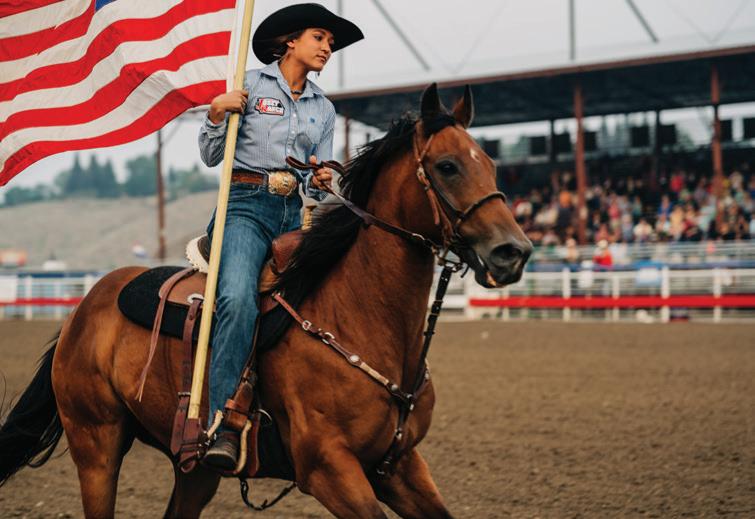

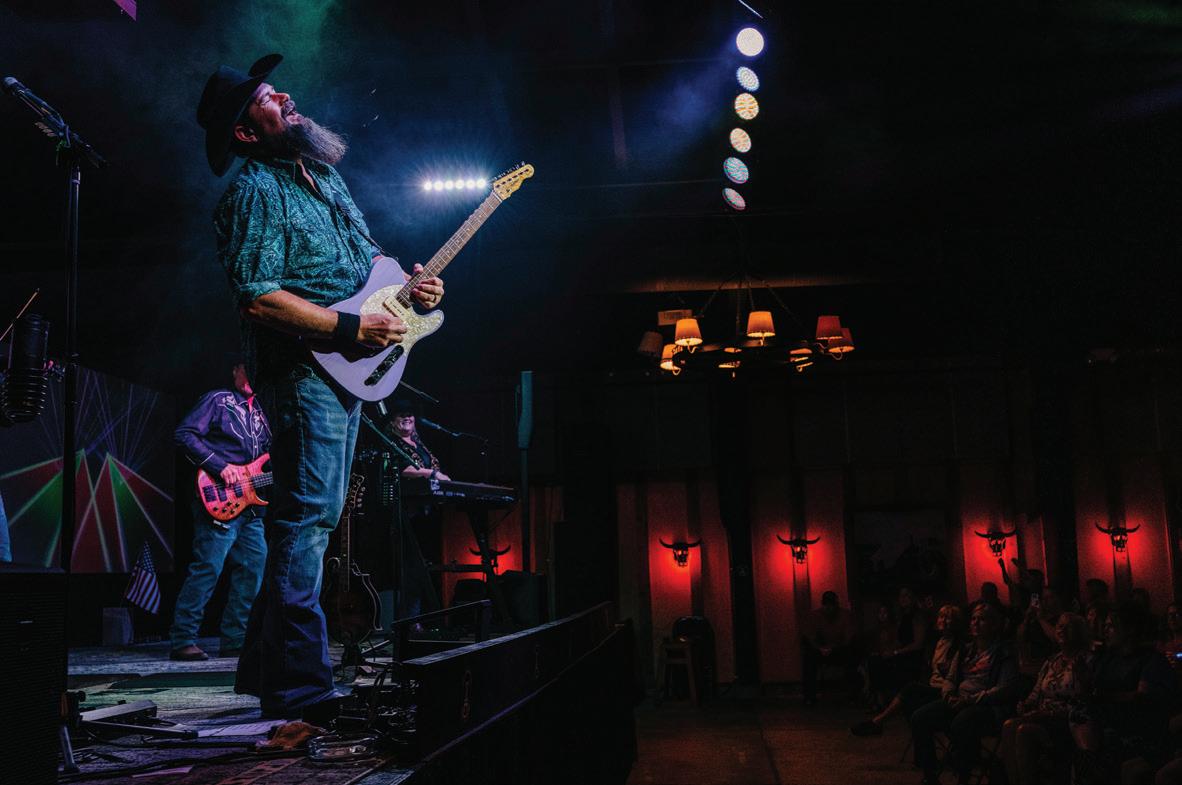
Known as the “Rodeo Capital of the World,” Cody hosts both the Cody Stampede Rodeo, an annual event held around the July 4th holiday since 1919, and the smaller-scale Cody Nite Rodeo, a popular series throughout the summer months that’s been a town staple for more than 85 years.
At Old Trail Town & Museum of the Old West, groups can step back in time to get a sense of what it may have been like living in an 1890s frontier community. The
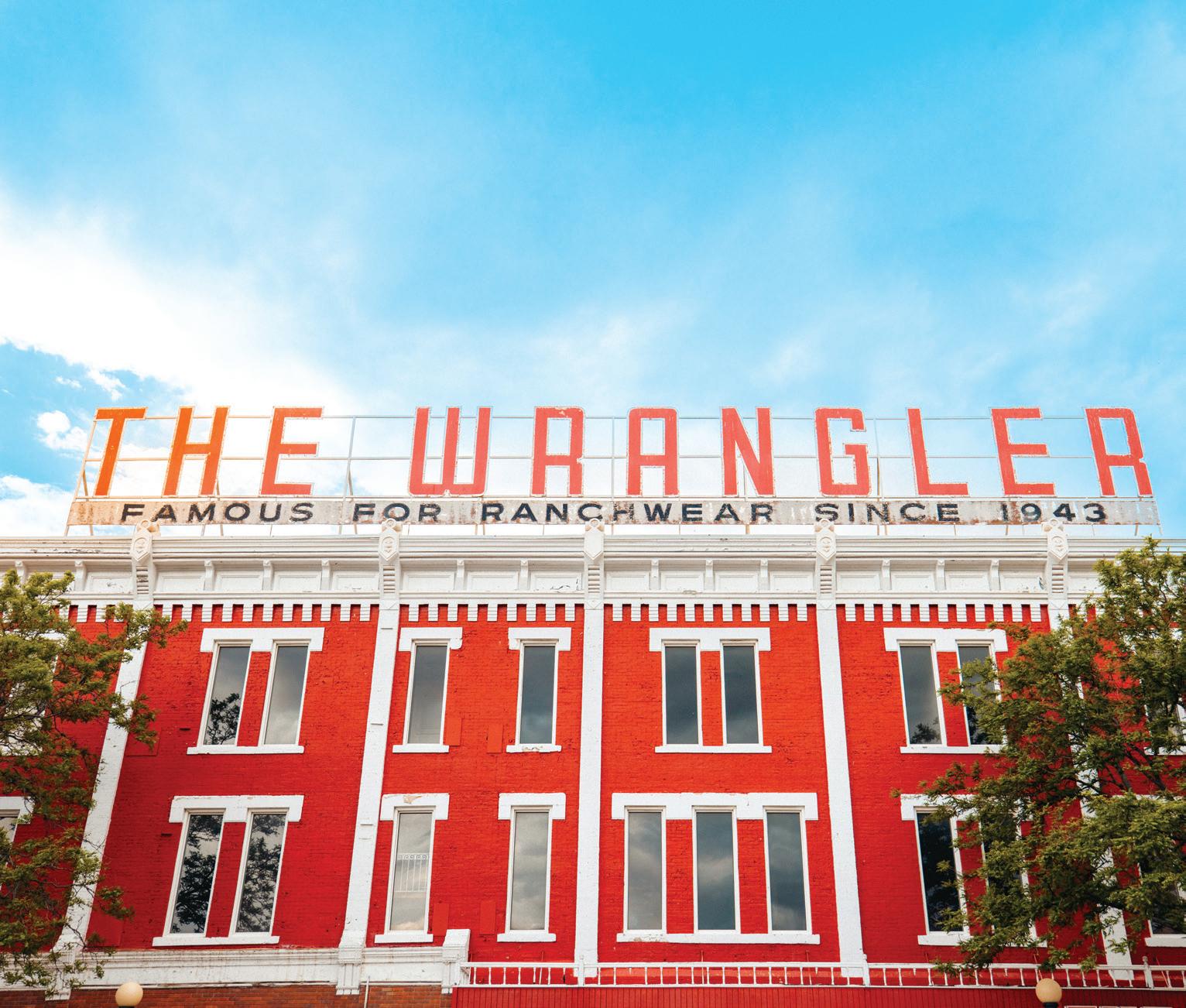

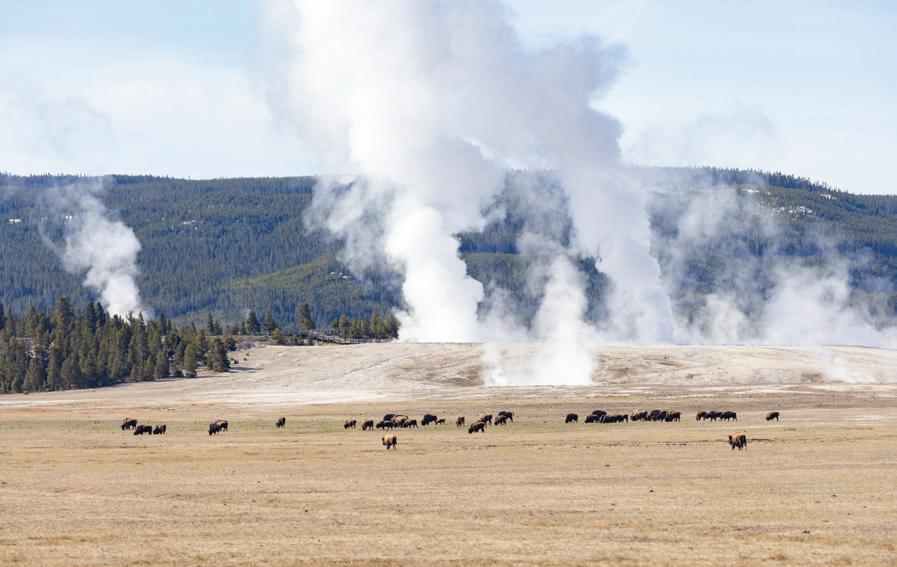
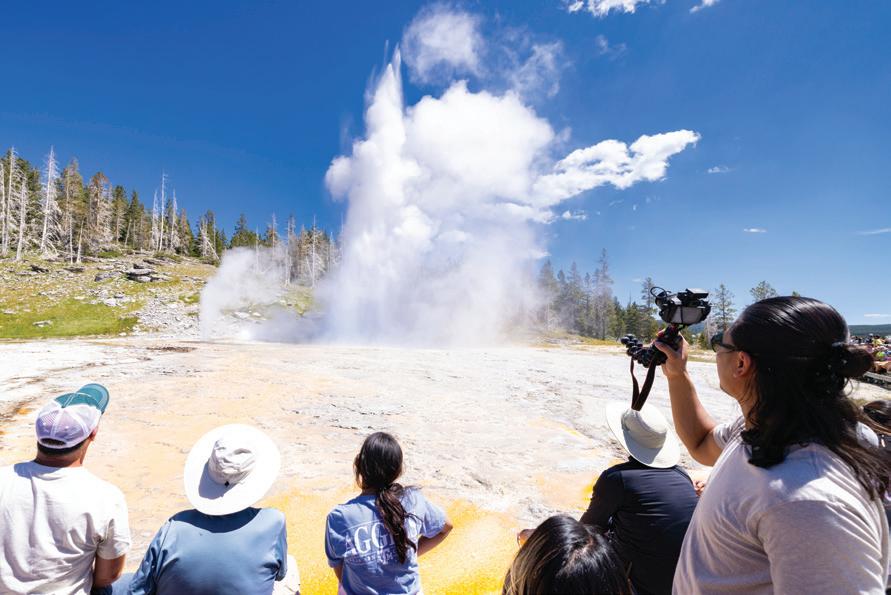
site’s 27 authentic frontier buildings — including a school, general store, blacksmith shop, saloon and residential cabins, each relocated here from their original sites — are outfitted as they might have been when early frontiersmen first arrived in the area.
“Cody has something for everyone, whether it’s art and museums or that Western experience where you can ride horses, sing cowboy songs and go to the rodeo,” said Katrina Southern, marketing manager for Cody Yellowstone.
When groups want to rest and refuel, downtown Cody offers both food and entertainment options galore, including nightly dinner shows at The Cody Cattle Company, featuring a rotating lineup of family-friendly musicians. During summer, “Wild West Spectacular the Musical,” held at the Cody Theatre, offers a lively, comedic take on Buffalo Bill’s enduring Wild West legacy.
codyyellowstone.org
No visit to Wyoming is complete without a stop at Yellowstone, the country’s first national park and famed site of some of the planet’s most unique — and iconic — geothermal features. There, you can explore a range of hot springs and mudpots, plus the famous Old Faithful geyser, just one of more than 500 active geysers in the park.
Traveling from Cody, groups can conveniently access Yellowstone through its East Entrance in about an hour’s drive, or through its Northeast Entrance, roughly two hours away. The latter option, while longer, offers “phenomenal views leading to the Lamar Valley, which is a wildlife hotspot in the park” with frequent sightings of bear, bison and wolves, according to Southern.
Inside the park, beyond Old Faithful, the Grand Canyon of the Yellowstone — noted for its colorful canyon walls and picturesque waterfalls — is a must-see. The area’s iconic Lower Falls is viewable from several vantage points, including Artist Point and Lookout Point.
Given the park’s popularity, groups may wish to plan well ahead to book adequate blocks of rooms, particularly at
in-demand park lodges like Old Faithful Inn, Mammoth Hot Springs Hotel & Cabins, and Lake Yellowstone Hotel & Cabins. That’s especially true for summer travel, though other seasons of the year often offer more flexibility.
“Yellowstone, for so long, has had this misconception that if you don’t book at least a year out, then you’re never going to get in here, and that’s just simply not true,” said Todd Walton, director of marketing and sales for Yellowstone National Park Lodges. “If you’re looking at early season, like the first half of May, or if you’re looking at October or November, those are great times [to come], and we can almost always accommodate groups during those months.”
Walton’s team can help customize lodging amenities to fit each group’s specific needs and point groups to options that sync well with their travel itineraries. For example, for those traveling to Yellowstone from Jackson Hole or via Grand Teton, Yellowstone’s Grant Village offers an ideal location that’s “really dialed in for groups,” Walton said. “It’s got an amazing restaurant that overlooks the lake, and it sits right on that [visitor-favorite] West Thumb of the geyser basin area.”
yellowstonenationalparklodges.com
If upscale affinity groups are in your marketing plan, Telisa Rech is the person to call. She is knowledgeable about this worldwide travel market and can help you create a customized package that reaches these planners using any combination of print, digital, podcast and site visit sales options.
Affinity planners for banks, universities, chambers of commerce and other niche organizations are planning trips now for destinations across North America and the globe. Their groups are extensive travelers who have built lifelong friendships by seeing the world together for years.
“I’ve made so many friends in this industry since coming onboard who have become great clients as well,” said Rech. “Select Traveler planners are smart, enthusiastic leaders of qualified groups and it’s been a lot of fun connecting them with travel destinations and tour companies. There is no better industry to be involved in than travel and there are no more qualified planners I know of than the readers of Select Traveler.”


BY JILL GLEESON
Virginia Beach has long entranced groups with its spectacular sun, sand and surf, not to mention a bustling boardwalk that unwinds for three miles alongside its beautiful beaches. But the city is also remarkable for the diversity of its military-themed attractions, a panoply of patriotic offerings that veterans and civilians alike can enjoy. Nine major military installations representing all branches of the U.S. Armed Forces are located in the region, as is the only permanent NATO headquarters outside of Europe.
“We have the largest concentration of military personnel outside of the Pentagon,” said Erin Goldmeier, director of
media relations for the Virginia Beach Convention & Visitors Bureau. “There are almost 100,000 active-duty personnel here. With that many service members located in the area, it’s not surprising we have so many cool museums and monuments that honor the Armed Forces.”
Those include the Military Aviation Museum, where group travelers can easily while away half a day (or more), as well as an array of places tucked away waterside. Some are located within walking distance of each other, so groups can stroll from attraction to attraction on the boardwalk, enjoying the best Virginia Beach has to offer during one blockbuster visit.

Dubbed “an absolute must” by Goldmeier, the Military Aviation Museum sits on 130 acres at the Virginia Beach Airport, a 20-minute drive from the oceanfront. “It houses the world’s largest collection of flying vintage military aircraft,” Goldmeier said. “They offer guided tours and have a great gift shop.”
Exhibits include more than 50 aircraft from throughout history, many fully restored and operational. They range from a P-51D Mustang, the legendary American fighter from World War II, to a World War I-era Fokker Triplane, the Red Baron’s airplane that Snoopy battled in the “Peanuts” cartoon. After working up an appetite with a tour, groups may enjoy a catered meal at the museum, enhanced by a talk from a veteran, pilot or historian. Or leaders can book entertainment from a Sinatra-style singer or other local musical act.
Whether they’re staying in Virginia Beach for a week or a weekend, group visitors will likely get to hear what city residents call “The Sound of Freedom.” That’s the noise F/A-18s make as they fly into and out of Naval Air Station Oceana, the East Coast Master Jet Base of the U.S. Navy. Leaders may want to complement that modern thrill with a blast from the past — a private air show to wrap up their group’s time at the Military Aviation Museum.
Cape Henry Lighthouse perches on Joint Expeditionary Base Fort Story, near the northern end of Virginia Beach. Groups will need to show valid, REAL IDs to gain entry, but they’ll find the visit well worth the extra step. Most begin with a stop at the Cape Henry Memorial Cross, located a few blocks from the lighthouse. It marks the spot where the continent’s first English settlers landed in 1607.
Group visitors can also check out other nearby monuments that pay tribute to the Battle of the Capes. The 1781 skirmish between the French and the British navies is said to have ultimately helped the U.S. win independence. But Cape Henry Lighthouse, the first public building funded by the newly formed U.S. government in 1789, is the real showstopper. A docent greets guests, who then are welcome to climb the lighthouse’s 192 steps.
“It sits at the corner of the Chesapeake and the Atlantic,” Goldmeier said, “so when you climb to the tippy-top, it really is like stepping back in time. You can see the bay and the ocean, and you feel like you can see where the ships came in 400 years ago, during that first landing. It’s a really cool experience.”
Group leaders may want to book a guide through the CVB for stops like the monuments at Fort Story and the Naval Aviation Monument Park (or the Navy Seal Monument, located on 38th Street). Guides will provide a rundown of the history and meaning of these powerful tributes and can escort groups from Monument Park to the Virginia Beach Surf & Rescue Museum. The two sites are only about a block apart on the boardwalk.
Goldmeier called the $1 million-plus Naval Aviation Monument, which was dedicated in 2006 by the Hampton Roads Squadron of the Association of Naval Aviation, “a
great option” for groups. “This free park is on 25th and Atlantic Avenue, right in the heart of the city,” she said. “There are six large bronze statues that represent three historical eras in Naval aviation history.”
The 16,000-square-foot plaza contains statues depicting Eugene Ely, who made the first successful landing and takeoff from a naval vessel in 1910; a WWII pilot and his crewman emerging from a ship’s hatch; and modern-day pilots and a maintenance chief gathered around a bomb skid. An additional statue movingly depicts a naval aviator returning home to his family.
A small but indispensable institution, the Virginia Beach Surf & Rescue Museum is open to groups for self-guided tours as well as private tours. It tells the fascinating tale of the U.S. Life-Saving Service, which would eventually morph into the U.S Coast Guard, and also delves into the city’s maritime history, according to Goldmeier.
“It’s housed in a wonderful old building on the beach, which was once a life-saving station,” Goldmeier said. “It’s more than 100 years old, with hardwood floors and cedar shake, and it’s on the National Register of Historic Places. So, visiting it is just a really cool experience.”
Groups will want plenty of time to browse the charming gift shop and explore the museum’s displays, which focus on topics such as the city’s surf culture and local shipwrecks. Along with artifacts from the wreck of the Dictator, such as a cabin door and a life preserver, the recently renovated institution offers a new exhibit about surfer Tom Blake. He’s the innovator who designed the first surfboard with a fin and the first hollow surfboard.

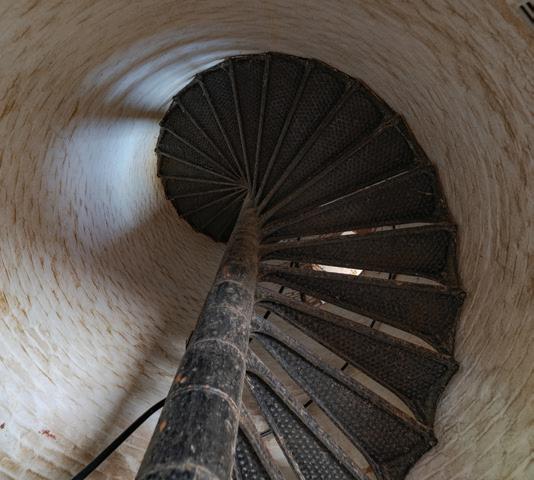

BY DIANA BOCCO
South Africa stretches from sundrenched coastlines to misty mountain peaks, packing an epic range of landscapes and cultures into one country.
At the heart of the country are cities where modern art galleries sit alongside bustling markets. Beyond them, open savannas are home to iconic wildlife. From the white-sand beaches of the Eastern Cape to the rolling vineyards around Cape Town, South Africa delivers adventure and relaxation in equal measure.
Groups heading to South Africa will find thrilling safaris, laid-back coastal villages and sweeping views around every corner. It’s a place of bold flavors and deep traditions, where township jazz clubs share the scene with world-class wineries. Whether chasing the Big Five at dawn or tasting craft beers at sunset, South Africa has an energy that groups won’t easily forget.

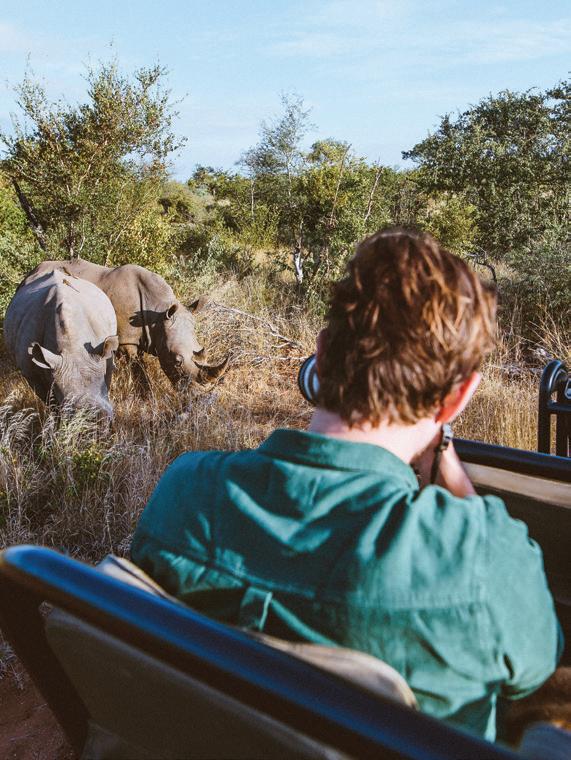
Clear waters, expansive spaces and stunning mountain formations make Cape Town one of South Africa’s most memorable destinations.
Inset: A safari in Kruger National Park

Perched beneath the flat summit of Table Mountain, Cape Town combines stunning scenery with a cosmopolitan vibe. Groups can ride the cable car up to panoramic views, wander through the colorful houses of Bo-Kaap or soak up the sun at Camps Bay. The V&A Waterfront is a must-visit, where shops and restaurants spill out onto the harbor. In the evening, visitors can enjoy local dishes along Long Street or catch live music in one of the city’s well-known jazz venues. For history buffs, a ferry to Robben Island offers a poignant glimpse into the prison where Nelson Mandela and others were held, with tours guided by former inmates.
Kruger National Park is one of Africa’s premier safari spots. Early mornings bring chances to spot elephants, lions and rhinos on guided drives, while afternoons can be spent at a lodge pool or visiting conservation centers. For groups keen on deeper immersion, private safaris and walking tours let you experience the sights, sounds and smells of the wild up close. Sunset game drives offer a chance to see predators on the move and birds settling in for the night, followed by campfire dinners under a blanket of stars.
Stretching along the southern coast, the Garden Route is a ribbon of forests, lagoons and pristine beaches. Groups can stop in Knysna to cruise its emerald estuary, hike among ancient yellowwoods in Tsitsikamma National Park or try bungee jumping off the Bloukrans Bridge. Quaint towns like Plettenberg Bay offer artisan shops and seafood cafés while inland estates produce award-winning wines. Further along, kayakers can paddle misty waterways in the town of Wilderness, and thrill-seekers can cross the Storms River suspension bridge or join a canopy tour. Seasonal whale watching near Hermanus and ostrich farm visits in Oudtshoorn add a unique regional flavor.
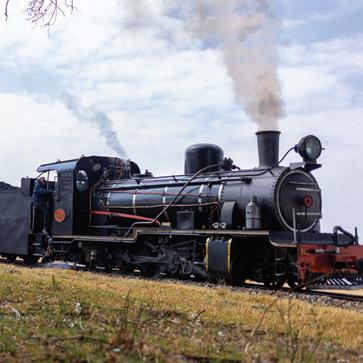
Operated by the New Cape Central Railway out of Robertson, the Robertson Wine Train is a restored steam locomotive that winds through oak-lined valleys and vineyard-covered slopes. During the two-hour journey, groups can disembark at family-run estates for guided tastings of crisp chenin blanc and bold pinotage varietals, perfectly matched with local cheeses and homemade preserves.
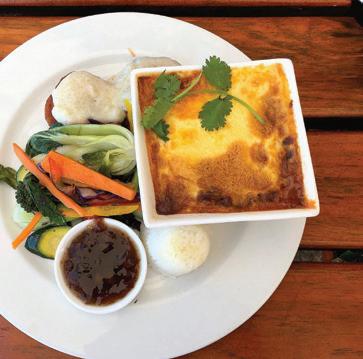
Bobotie, South Africa’s spiced minceand-egg bake, marries sweet and savory in one comforting dish. Ground beef or lamb is mixed with curry spices, dried fruit and fragrant chutney, then topped with a golden egg custard and baked until set. Served alongside yellow rice dotted with raisins and a zingy tomato sambal, it’s a homey meal that tells the story of Cape Dutch and Malay influences.
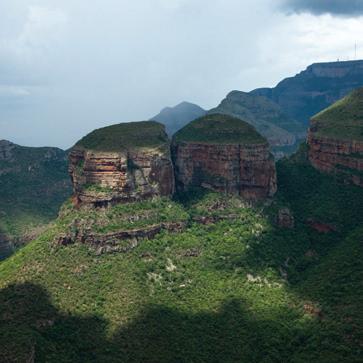
The Blyde River Canyon, one of the world’s largest green canyons, lies just outside of Kruger’s eastern edge. Here, steep cliffs rise above winding rivers and lush forests. Groups can take a boat trip to see the famous “Three Rondavels” rock formations or hike through rainforest pockets to spot rare bird species. The canyon’s dramatic overlooks feel like a secret tucked away from the usual tourist trail.

Zulu beadwork blends striking design with deep cultural roots. Each necklace, bracelet or headpiece features bold colors and intricate patterns that reflect generations of tradition. Crafted by hand and rich with meaning, these pieces make memorable gifts or keepsakes. Bringing one home supports local artisans and carries a rich thread of South Africa’s cultural heritage with it.

WITH ASHLEY RUNYON
Does taking three generations of travelers on a tour together sound like a blast — or sound like a headache?
Without guidance, multigenerational travel can be tricky. Having multiple age groups in one tour presents obstacles and challenges you may not immediately know how to navigate. Activity-level capabilities and interests can vary greatly in a single age bracket, let alone across multiple generations. So, how do you ensure everyone is happy across multiple age groups?
You do so by providing a tour that allows people to branch off and pursue their interests at their speed. Parents of young children may not be able to do as much as parents with teens, and grandparents may not share the same interests as the rest of the family. To plan a successful multigenerational tour, you must focus on offering a variety of energy and activity levels, as well as a tour that appeals to a diverse range of interests.

If you’re interested in planning a tour that appeals to multiple generations, consider the following tips and ideas.
Let’s say you have grandparents who would like to take their kids and grandchildren on a tour. Grandma and Grandpa might have different ideas of fun than their grandchildren, and you want everyone to have a good time while also spending quality time together. That way, they are more likely to take more group trips in the future.
One appealing option may be cruising. On a cruise, you can offer a wide variety of excursions. Your kids can hop on a zip-lining tour or other adventurous outing, while Grandpa learns the history of the town where the ship docked. Later, everyone can meet up for dinner and share their memories. They can also see a show together or participate in another activity. Most cruise lines provide a variety of activities onboard, appealing to a range of interests and offering something that everyone can enjoy. Many cruise lines even have kids clubs that give younger children, as well as young adults, a space tailored to their interests.
If you are set on a land tour, you will need a tour that offers free time throughout so that everyone can fit in the things they would like to do. Free time is key to making multigenerational groups happy. When visiting a town or city, consider offering shorter sightseeing tours and allowing travelers more
Ashley Runyon is a longtime bank and travel club planner. She lives in Ashland, Kentucky, with her family of six.
free time to explore independently. You should also consider offering fewer included meals on land tours so families can find restaurants that cater to the tastes of everyone in their party.
Appealing to different travel paces is also essential with multigenerational tours. Depending on where someone is in life, they might be looking for a fast-paced adventure or a slow, relaxing trip. But creating a tour that offers different speeds and activity levels is difficult. With most motorcoach tours, you have one speed, unless you offer free time in each city you visit.
Hub-and-spoke tours on land can be a great way to offer an itinerary with ample free time. I once offered a multigenerational international trip to London, Paris and Rome. The
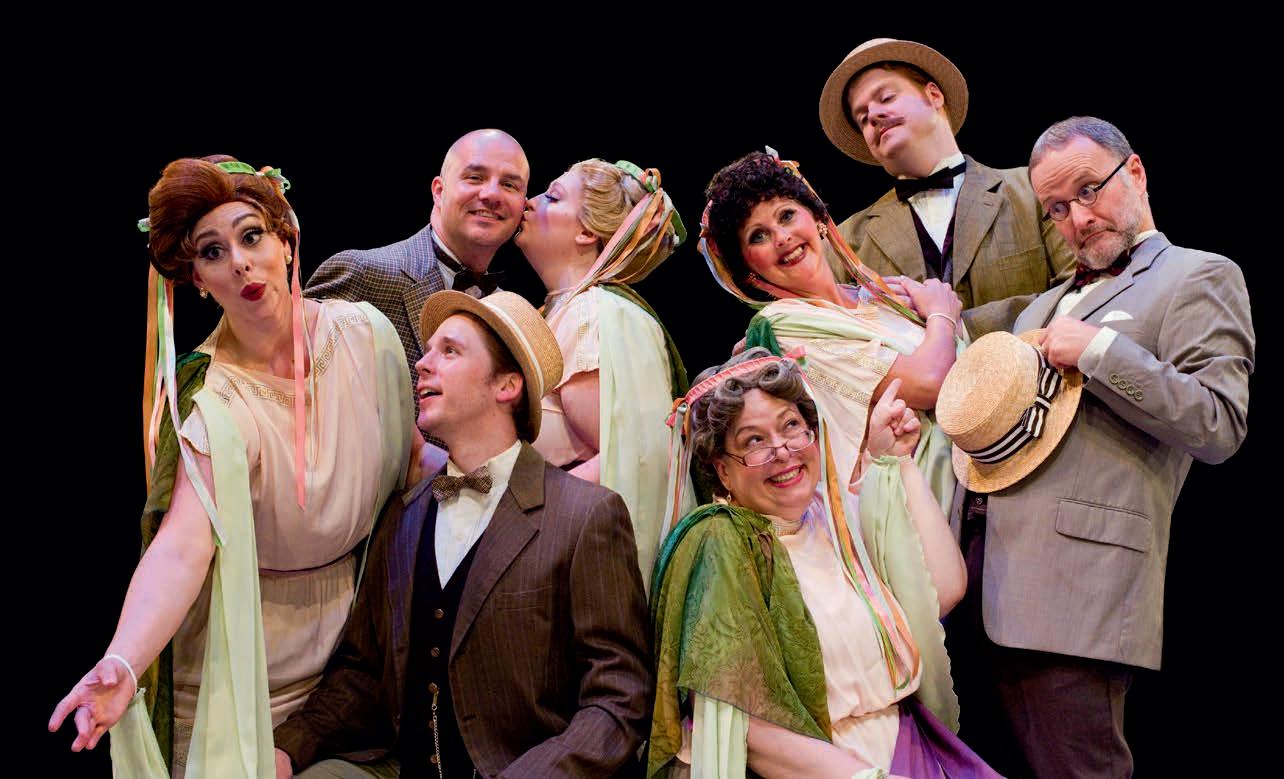
tour spent three days in each city, with the first day including a sightseeing tour and the other days offering free time. I provided some suggestions, but most of the families decided to go off on their own or chose to book day trips with local guides based on their interests.
A lot of group travel planners don’t think to do this. They’re in the habit of building detailed itineraries with limited freedom. They do that because bus tours provide a lot of information to people in a short amount of time. Remember, when planning a tour with multiple generations, you must include more free time to ensure those younger travelers enjoy themselves enough to sign up for more trips with you in the future.
Remember to think outside the box with multigenerational travel. Offer tours with a variety of activity levels and free time or with a range of excursions. We don’t want families to spend their entire trip apart, but we do want to offer variety that appeals to them all.
Most travel planners don’t run multigenerational trips very often; however, it might be worth increasing their frequency in your travel program. Offering tours that allow clients to travel with their families — and have fun in the process — will expand your customer base and grow your business.













Grab your camera and board the 4x4 — you’re in for the adventure of a lifetime.
Since 1993, Collette has been taking travelers to Africa to see their favorite animals in the wild. Boasting decades-long connections, our in-destination tour designers expertly curate every game drive, sanctuary visit, and river cruise to increase your chances of spotting some of the world’s most incredible wildlife.
Ready to see the elusive “Big 5” in the wild?
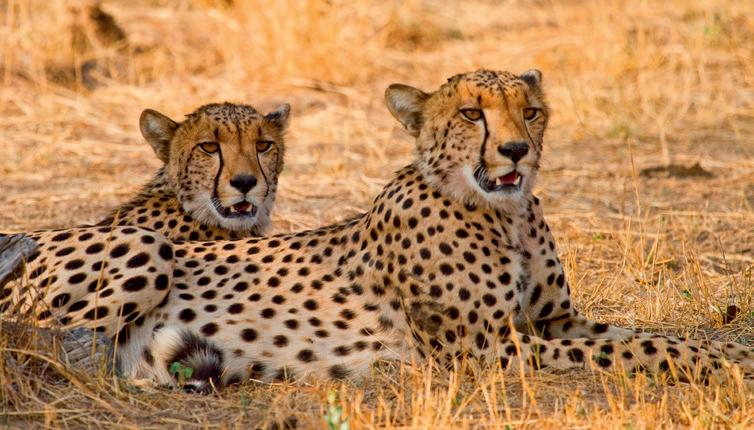


Small Group Explorations
(max 18 travelers)
13 game drives Exploring South Africa, Victoria Falls & Botswana
Namibia & South Africa: Epic Landscapes & Wildlife
Small Group Explorations (max 19 travelers)
8 game drives & cruises
Small Group Explorations (max 18 travelers)
5 game drives